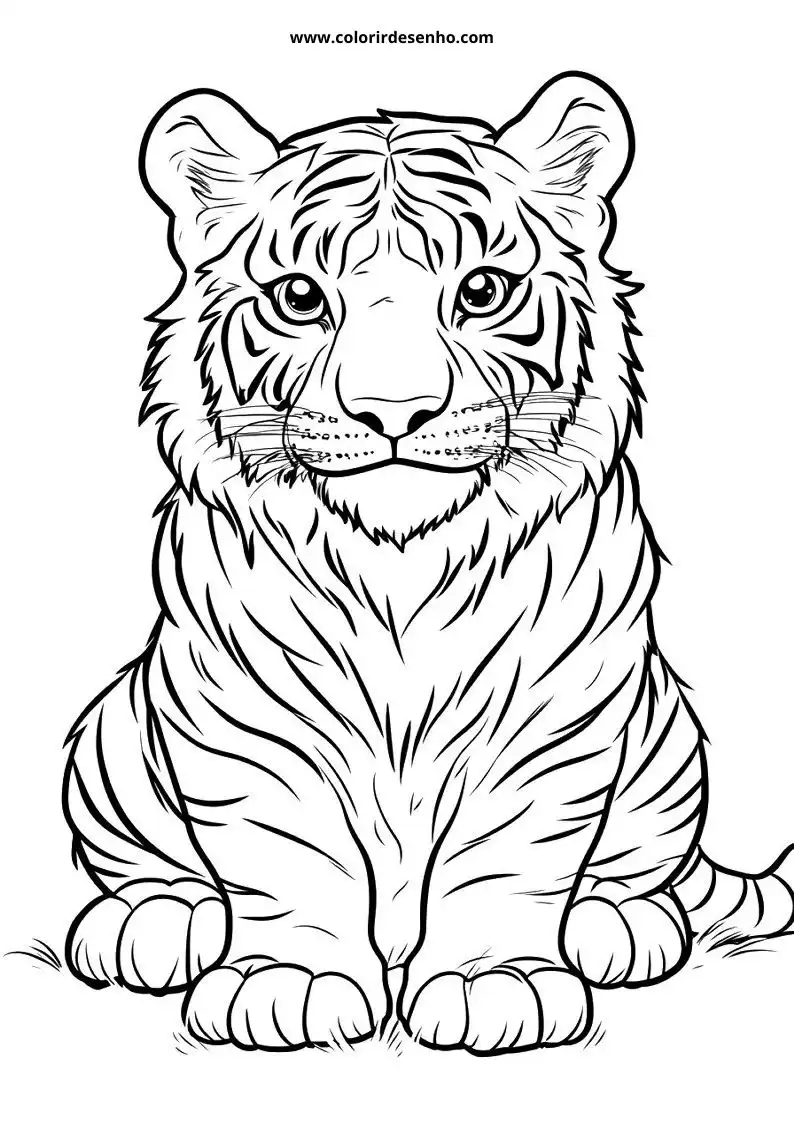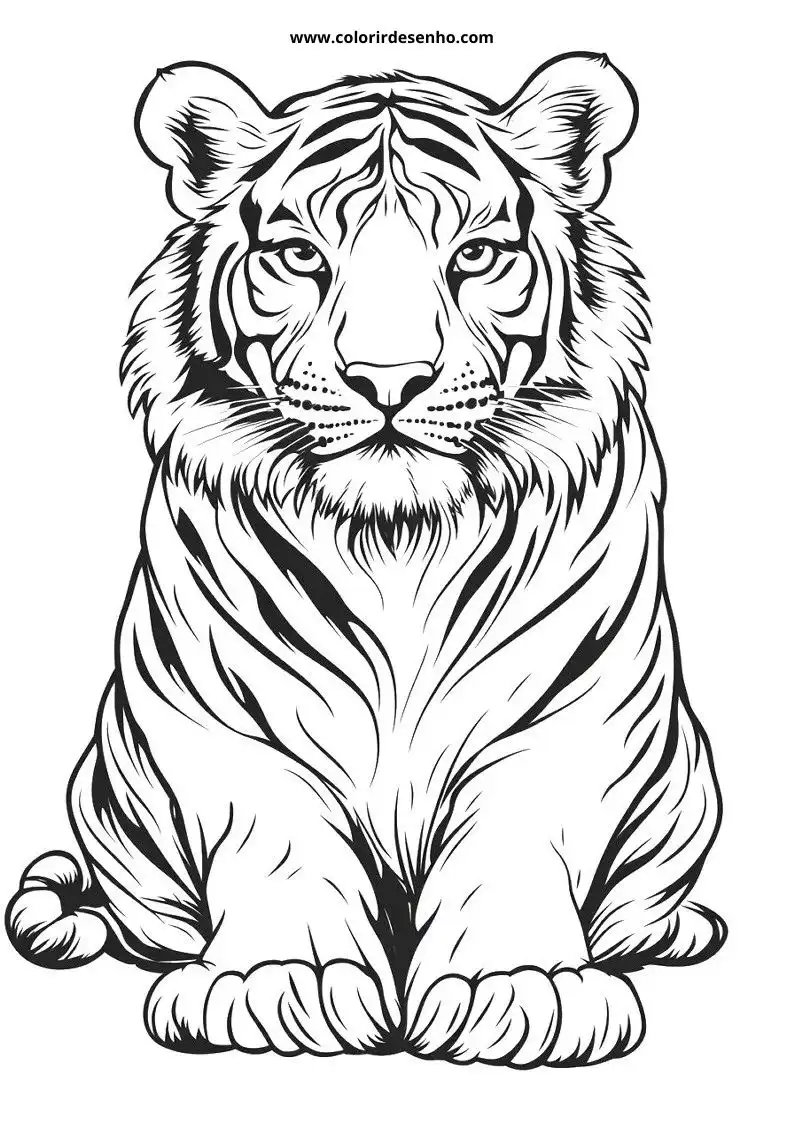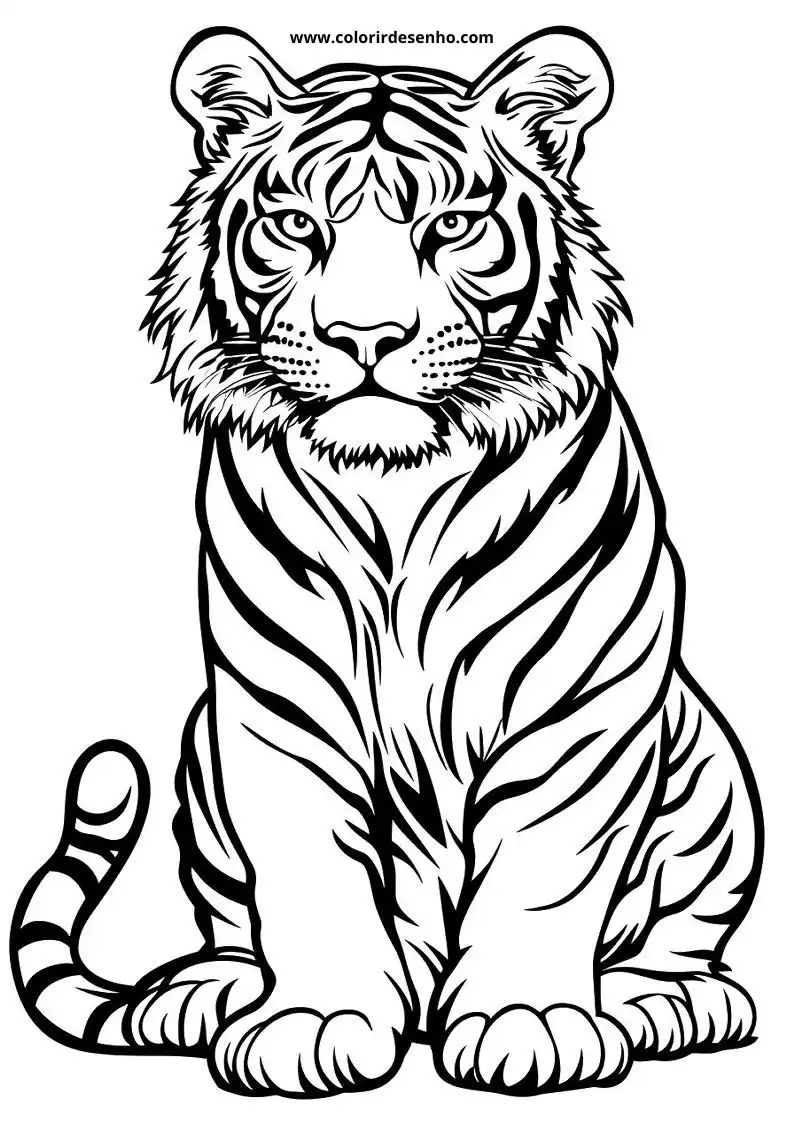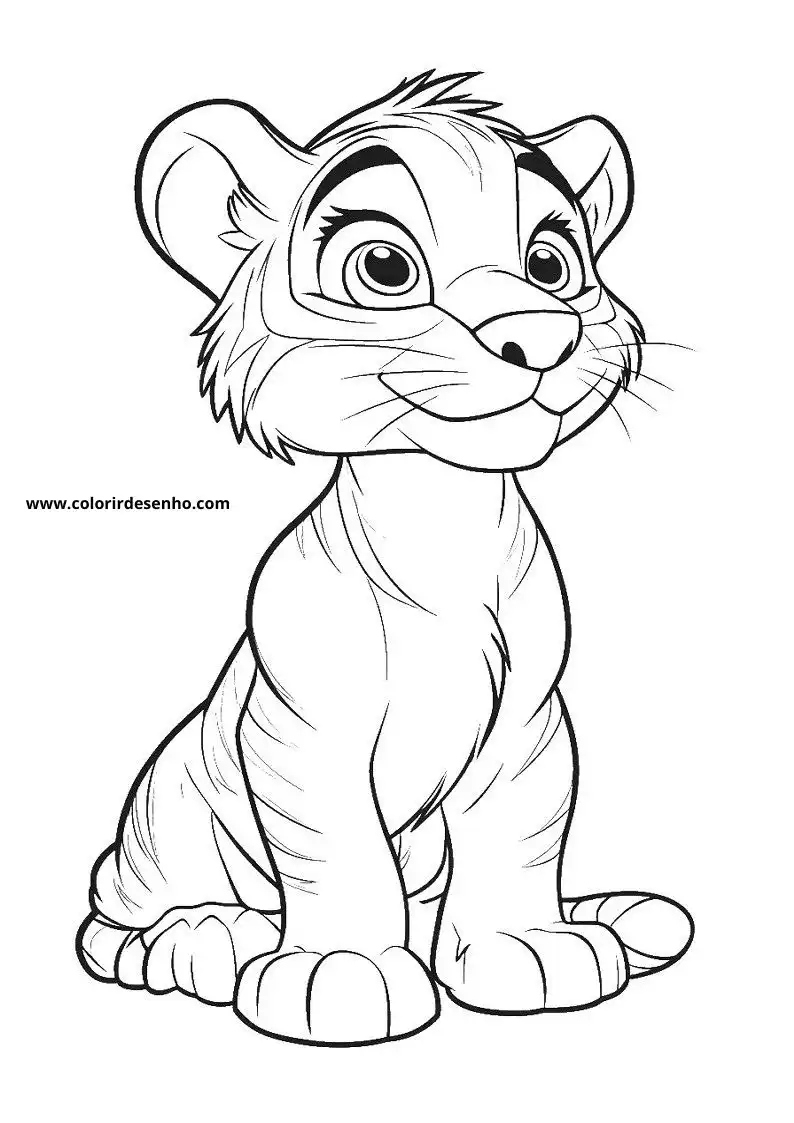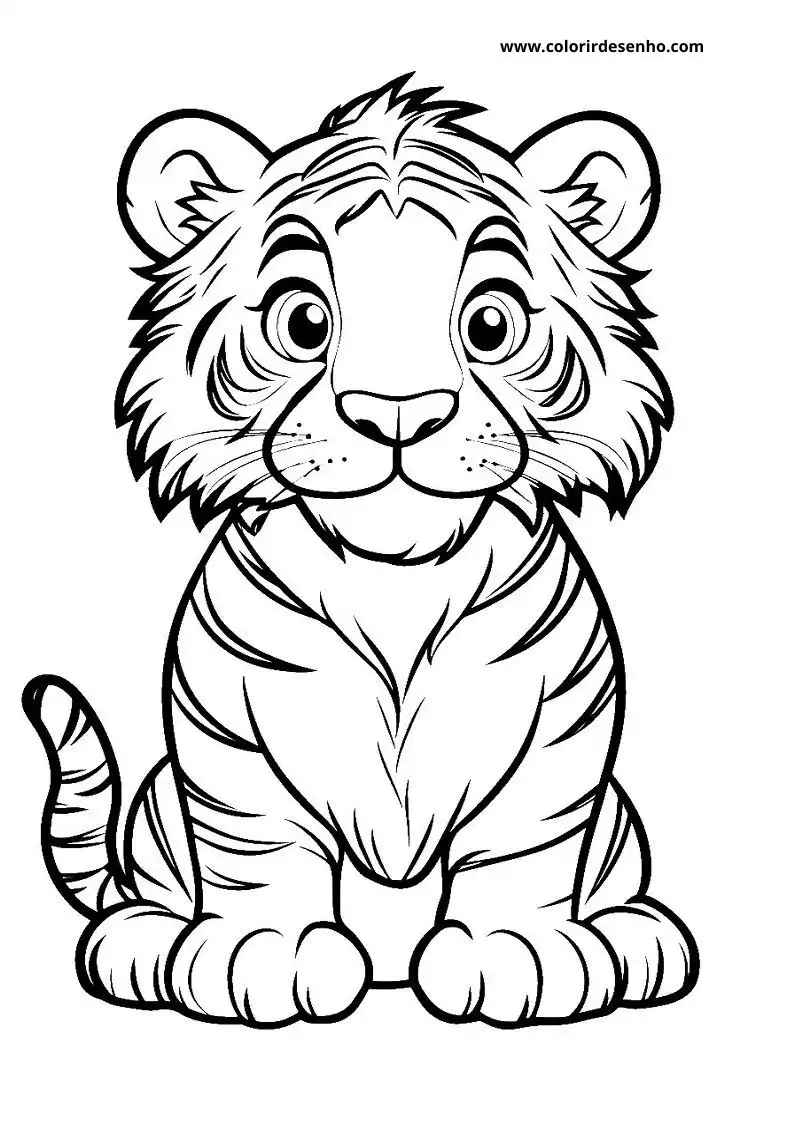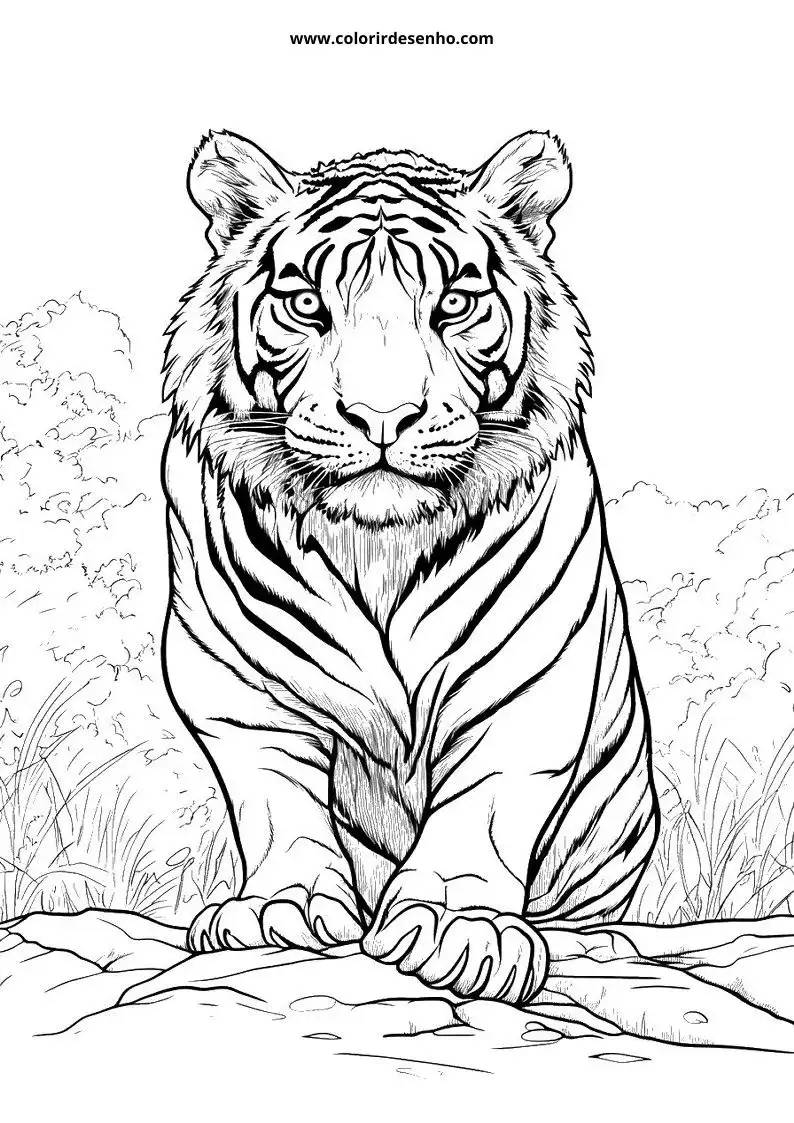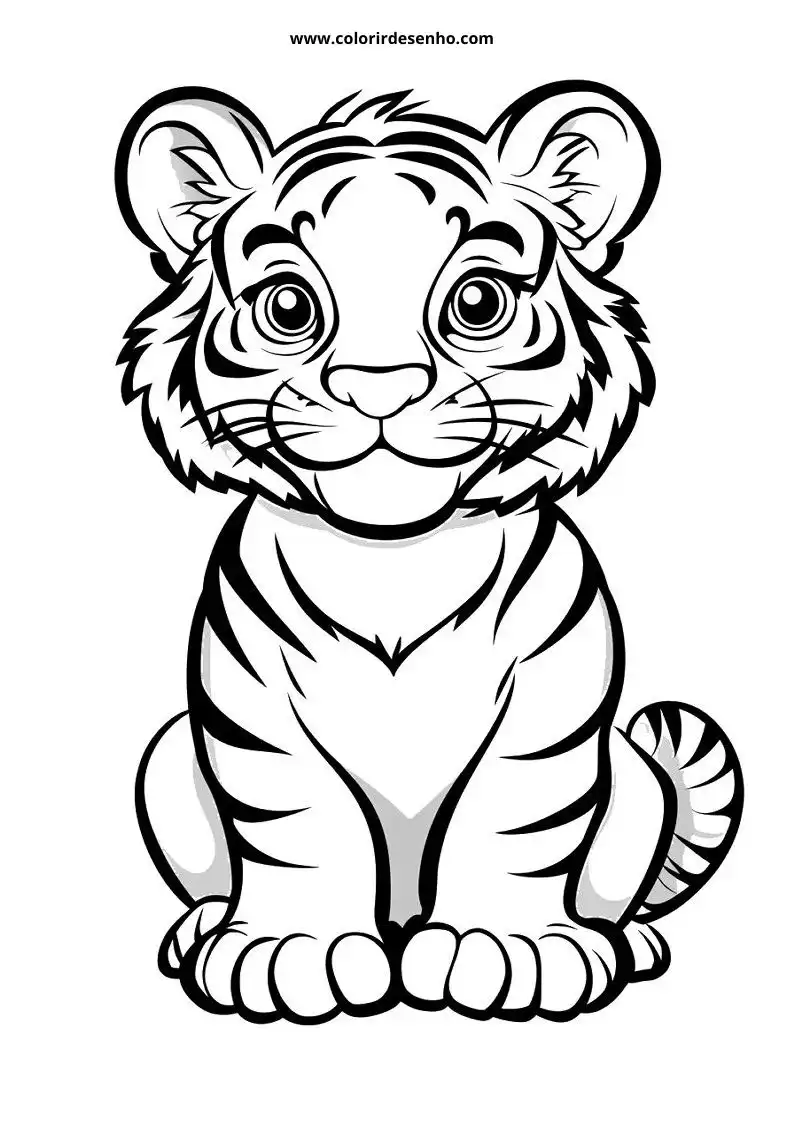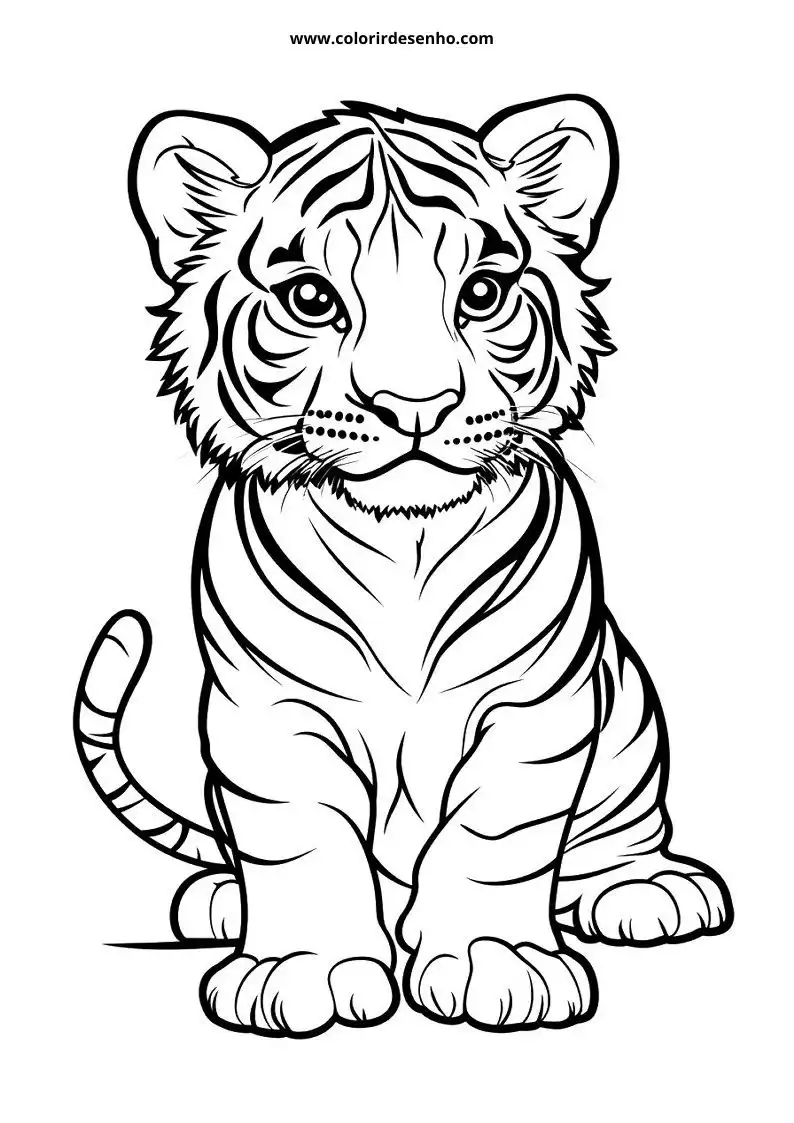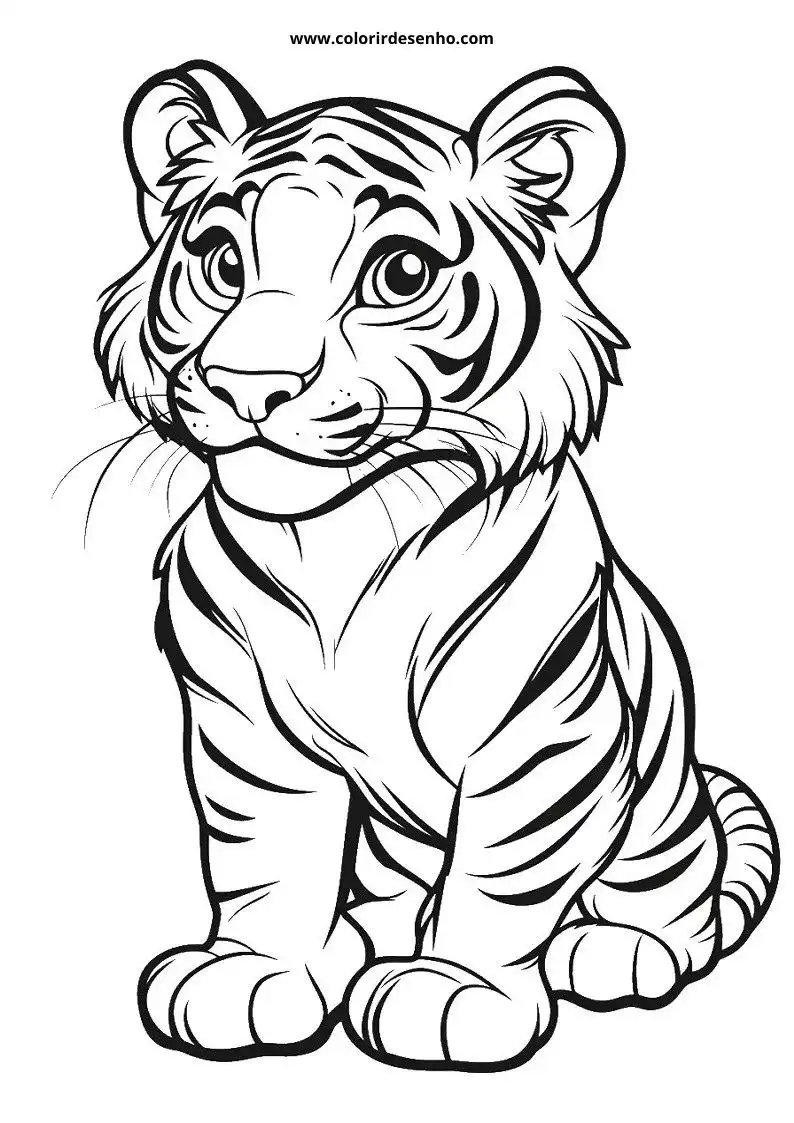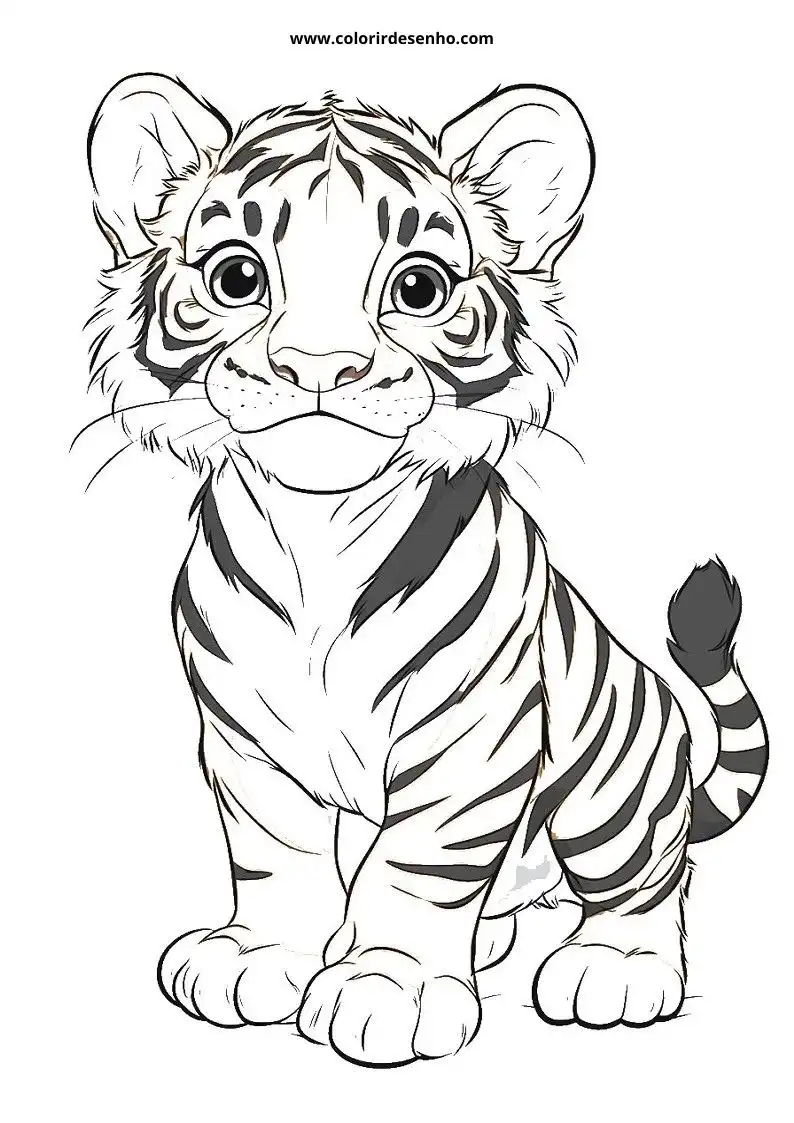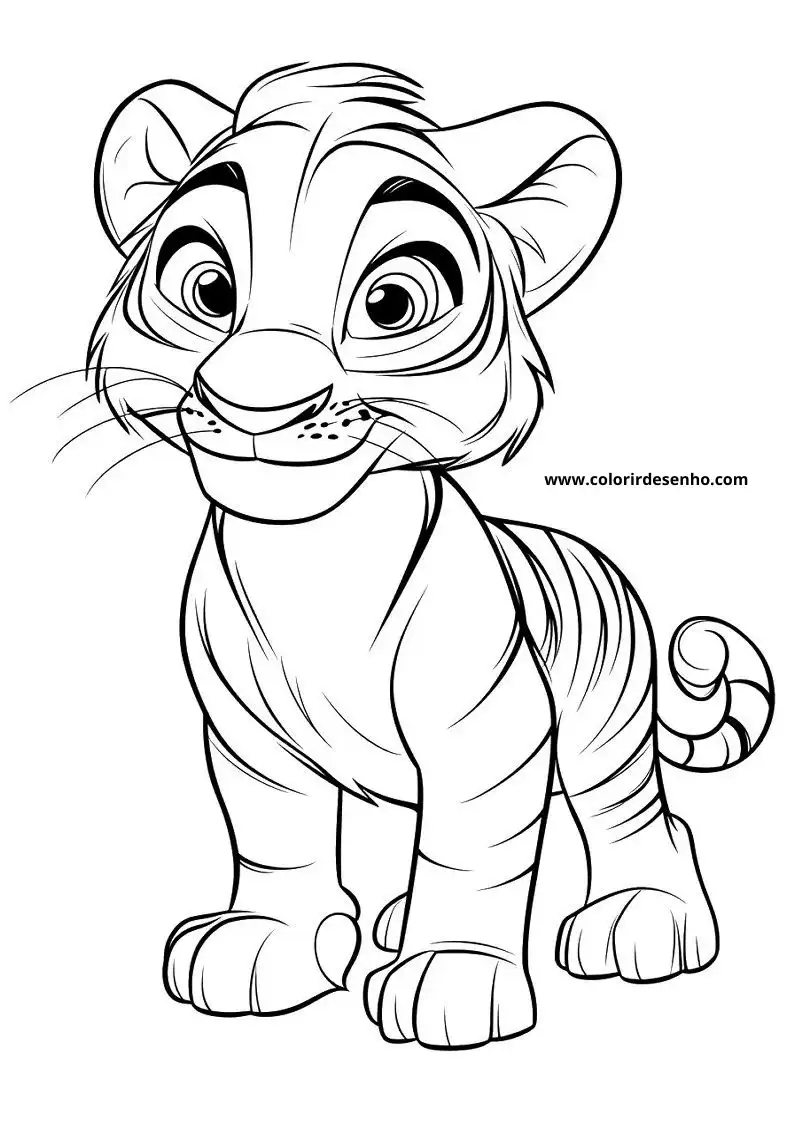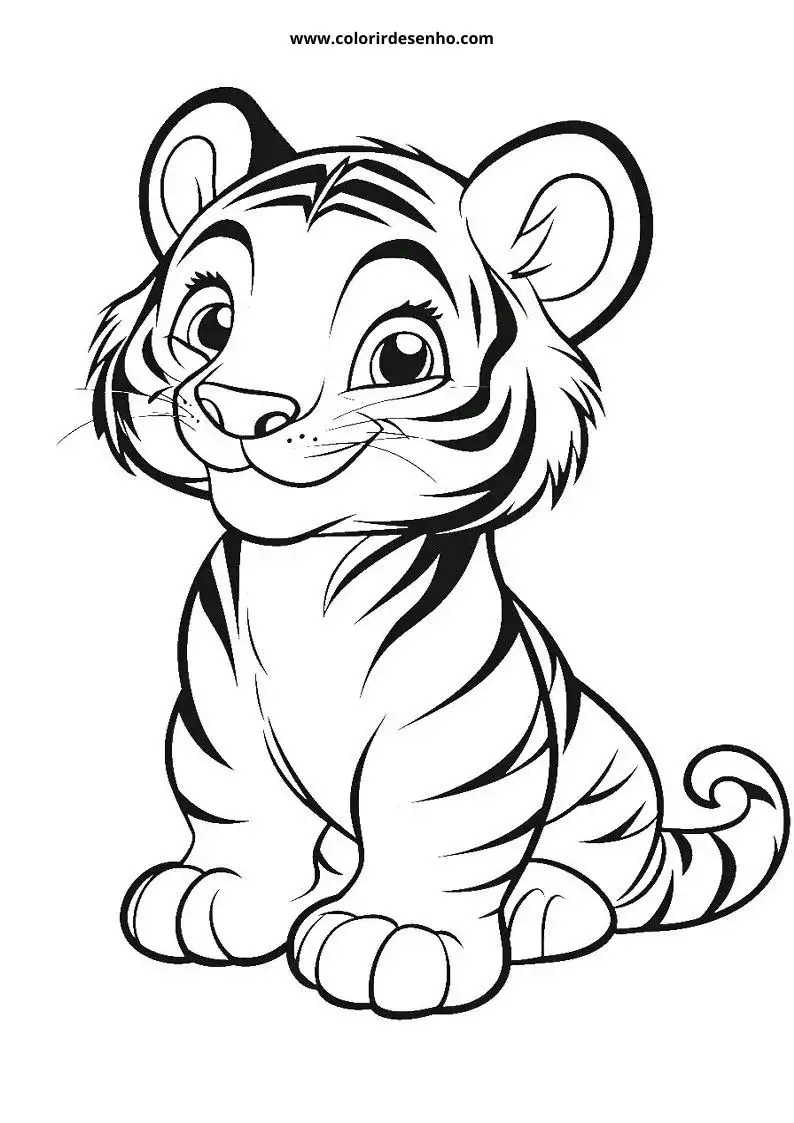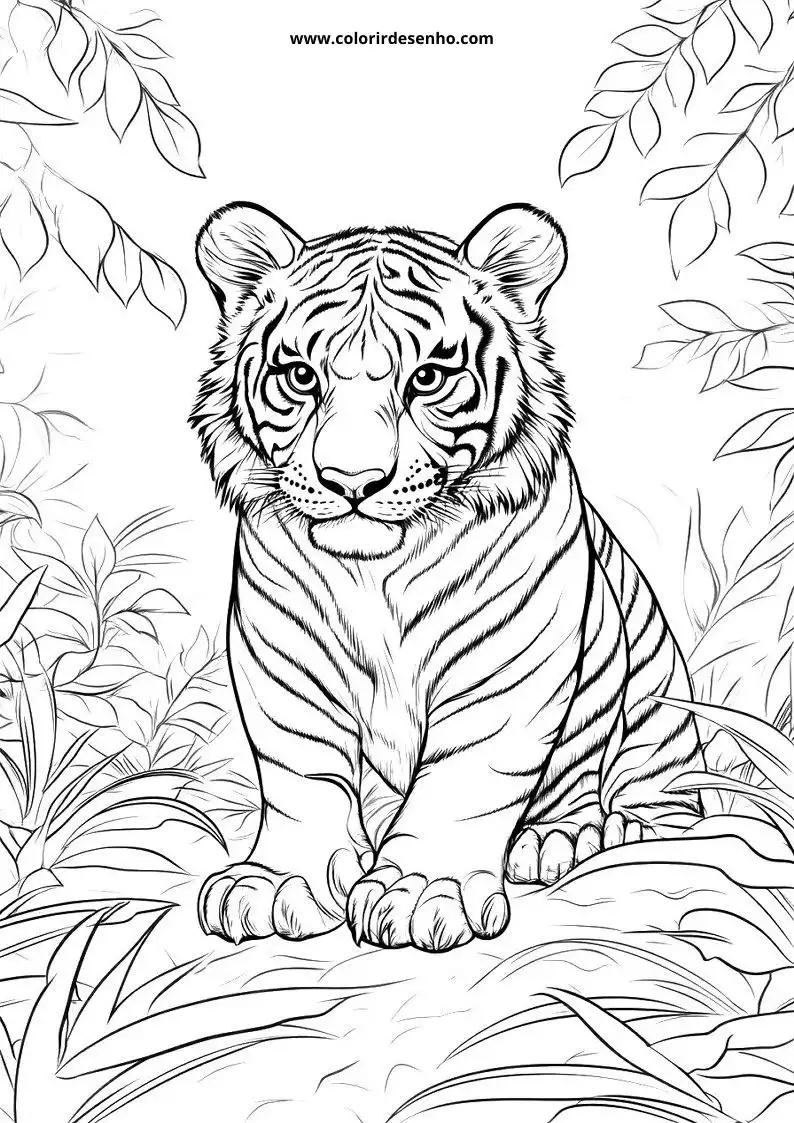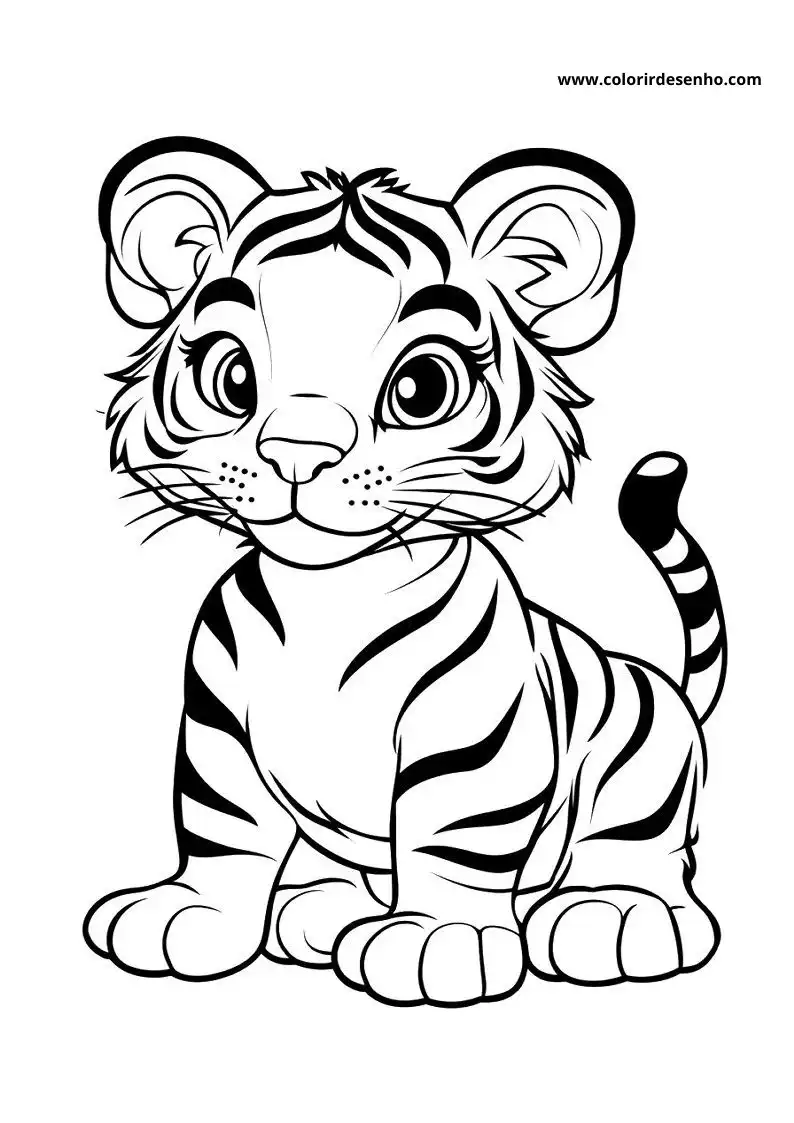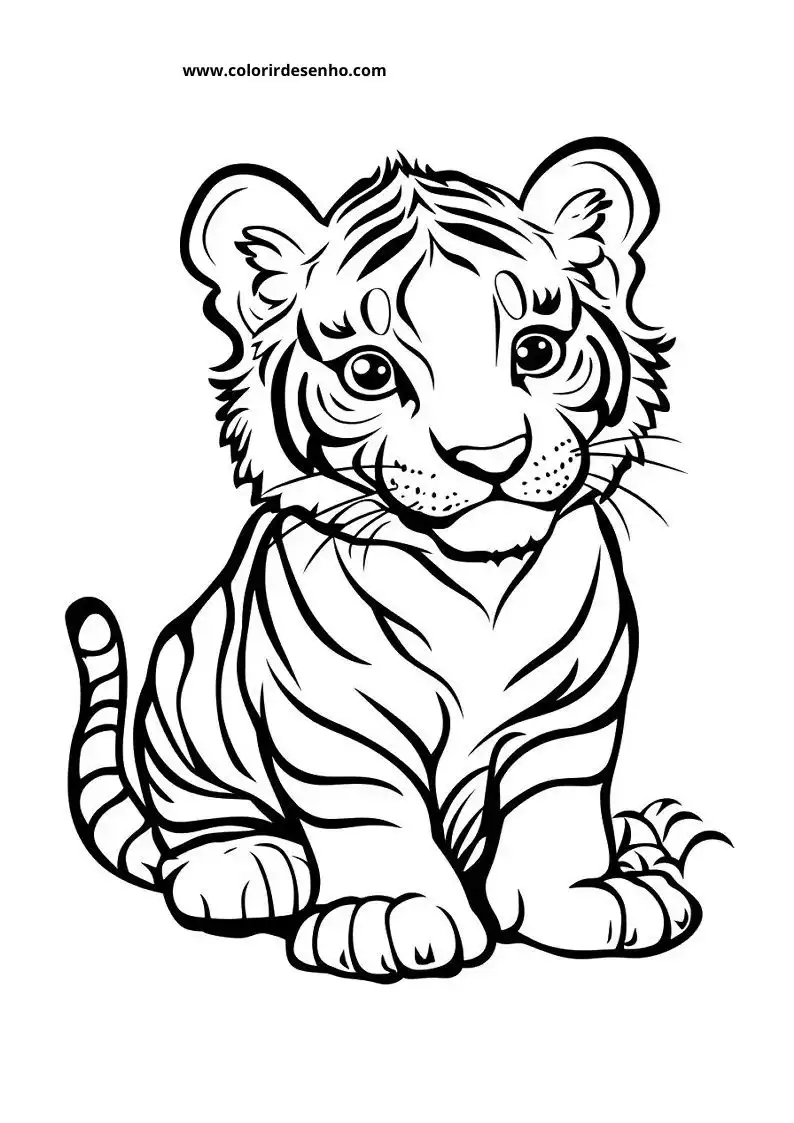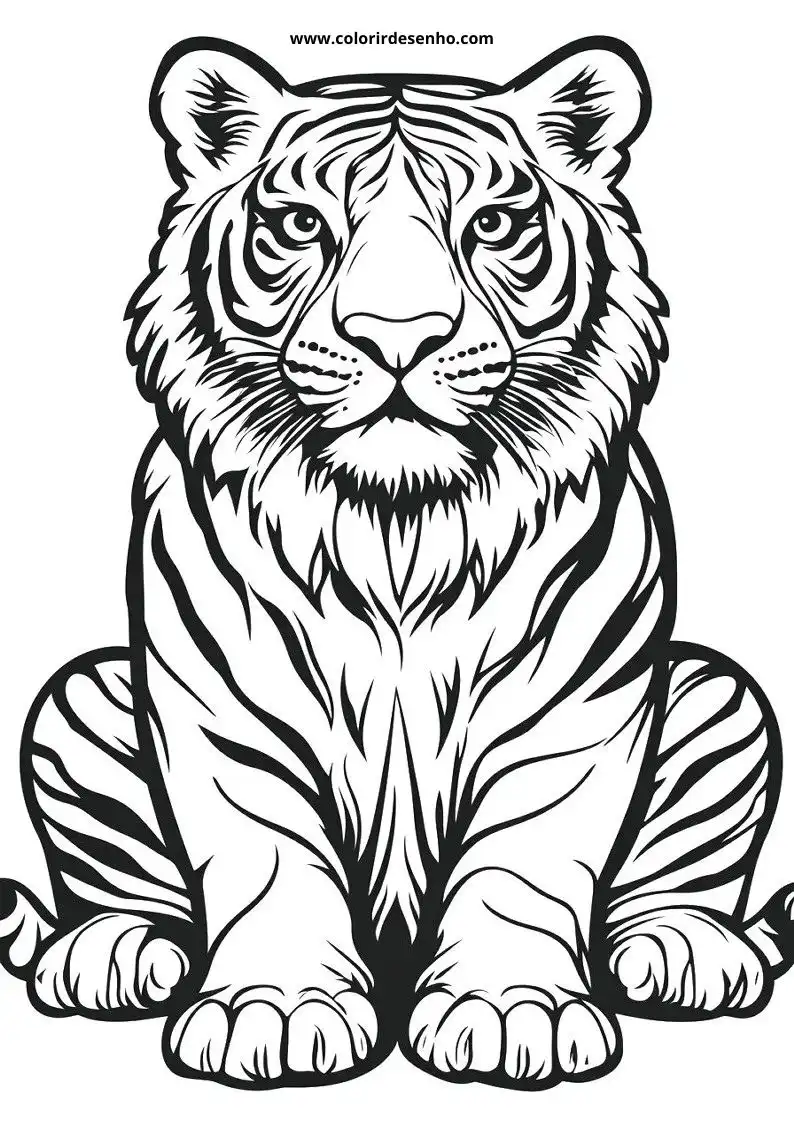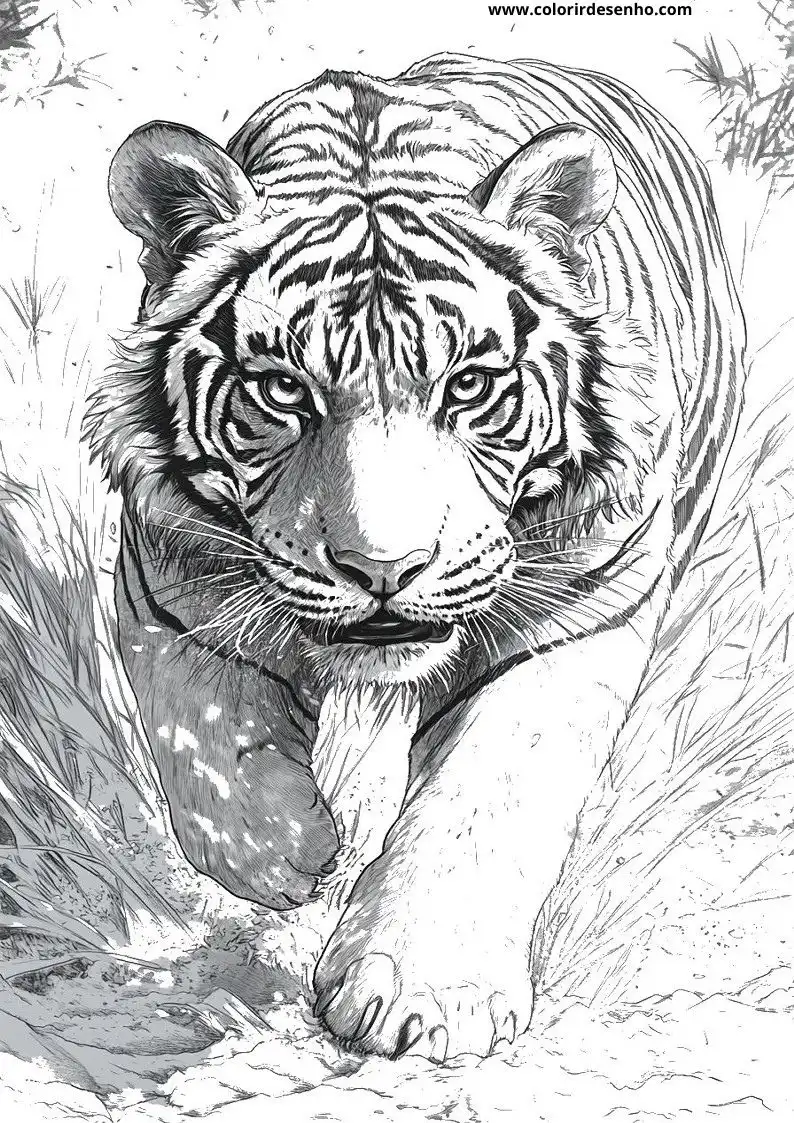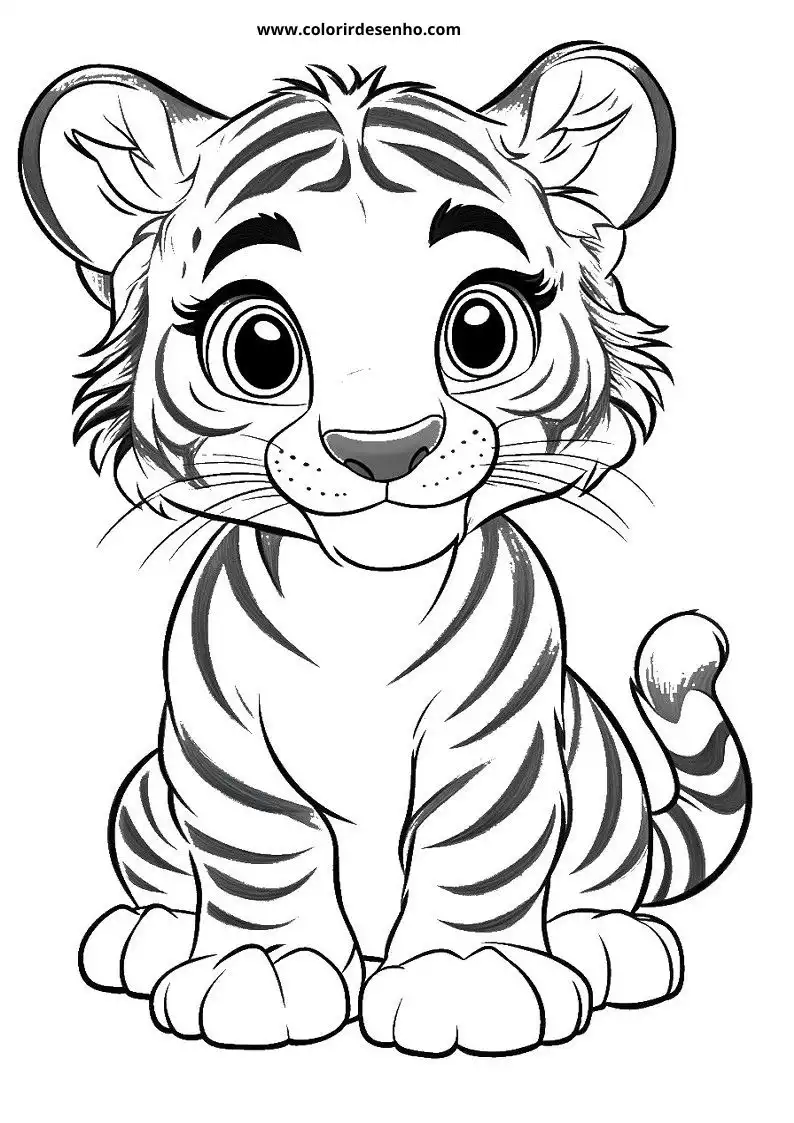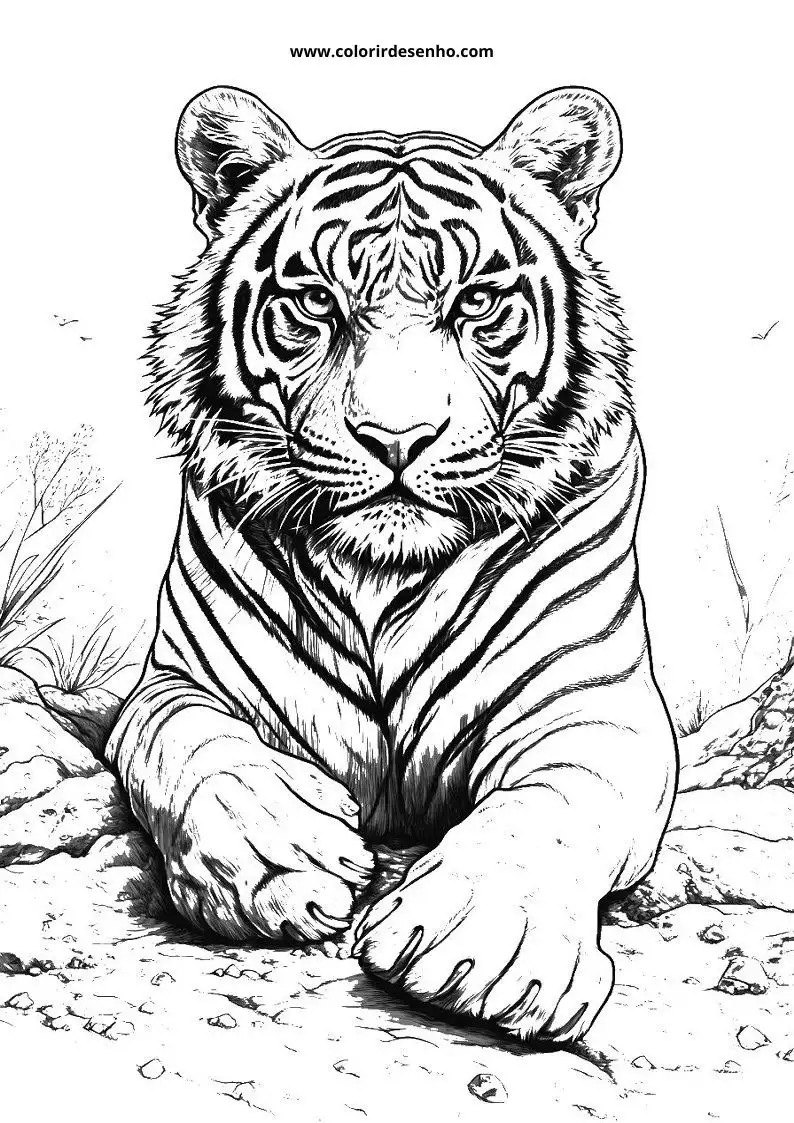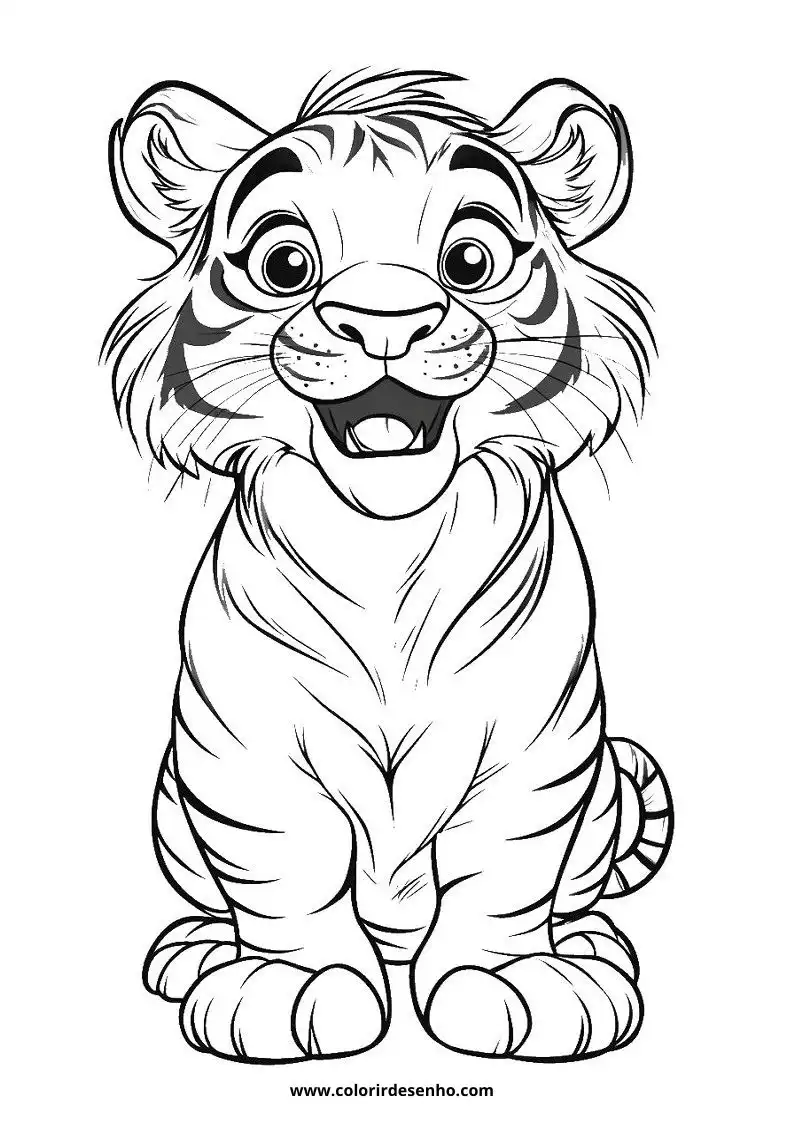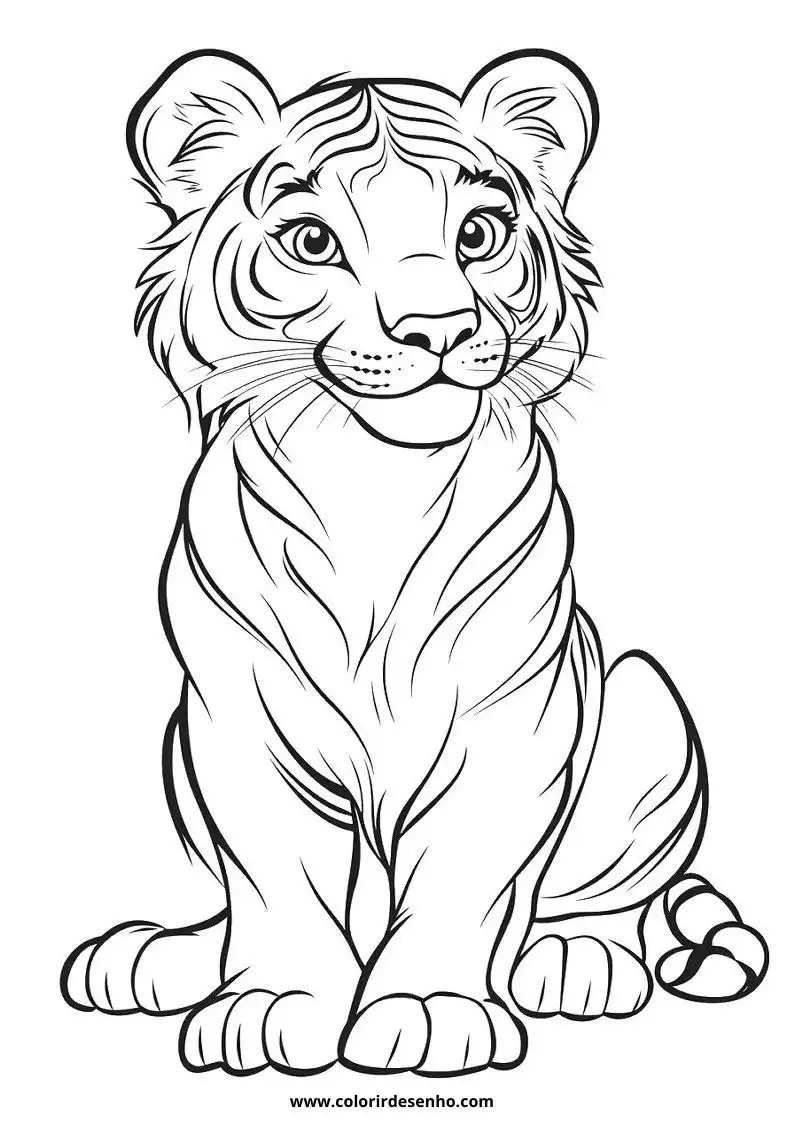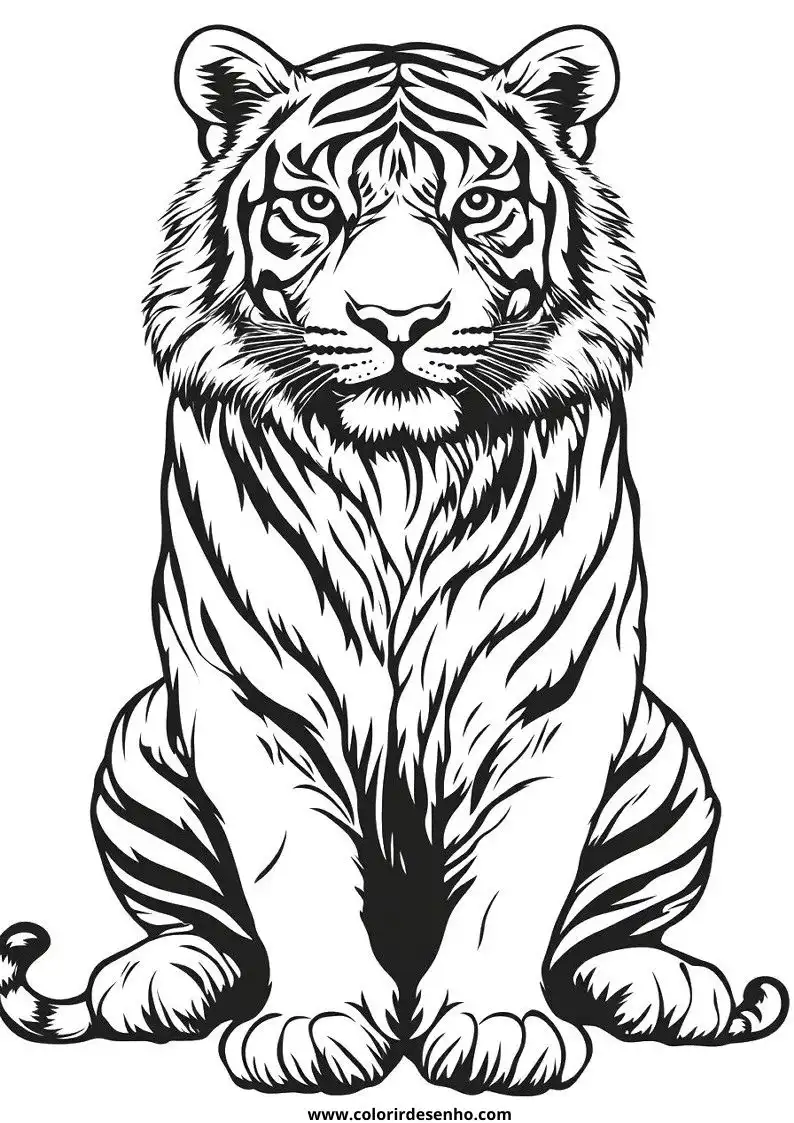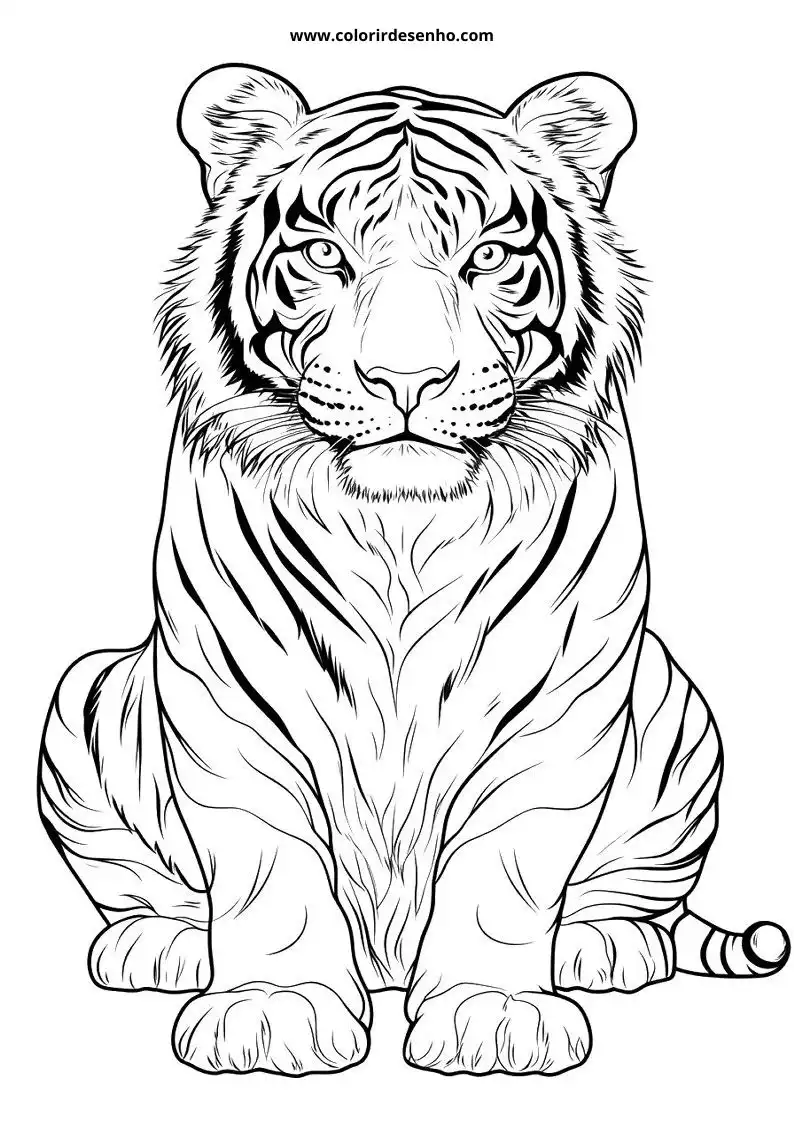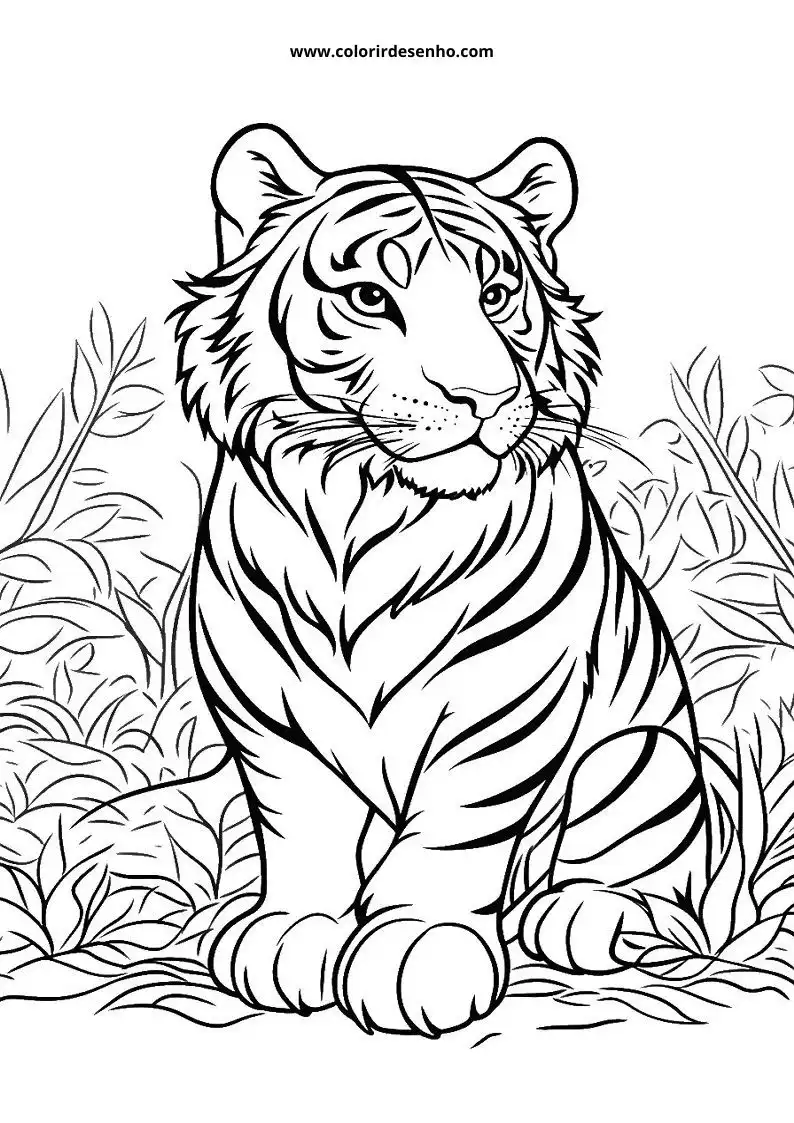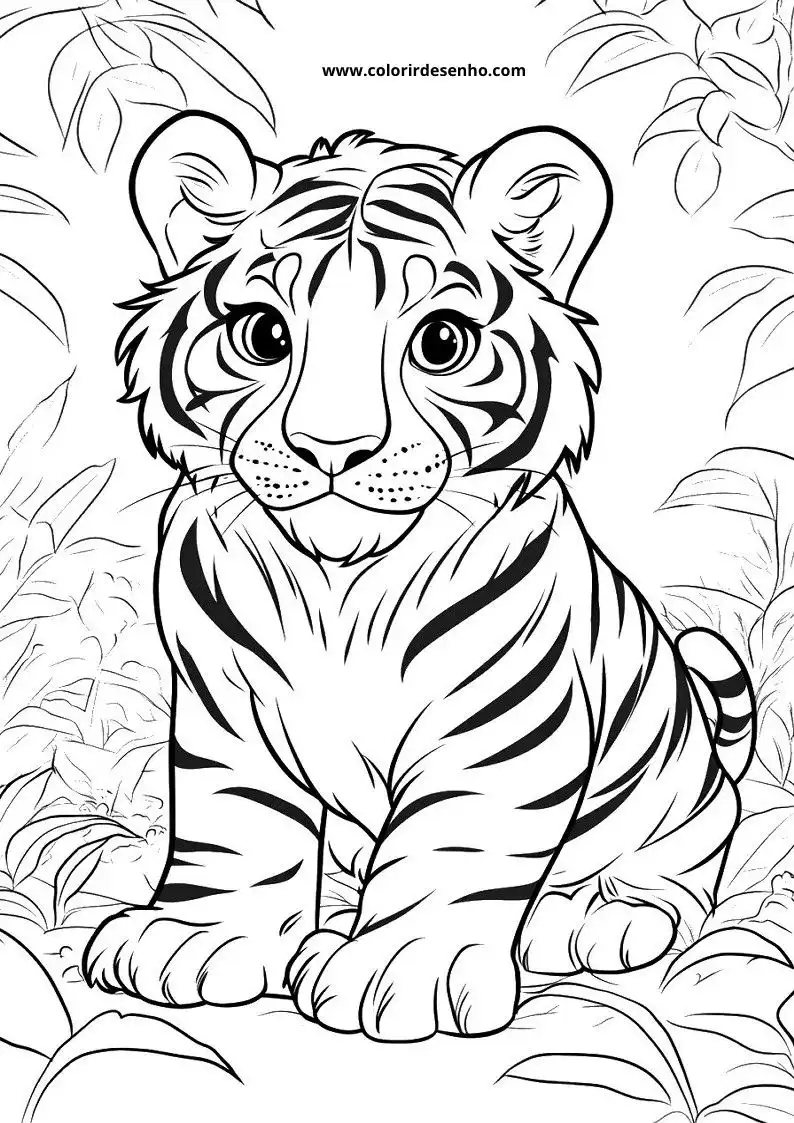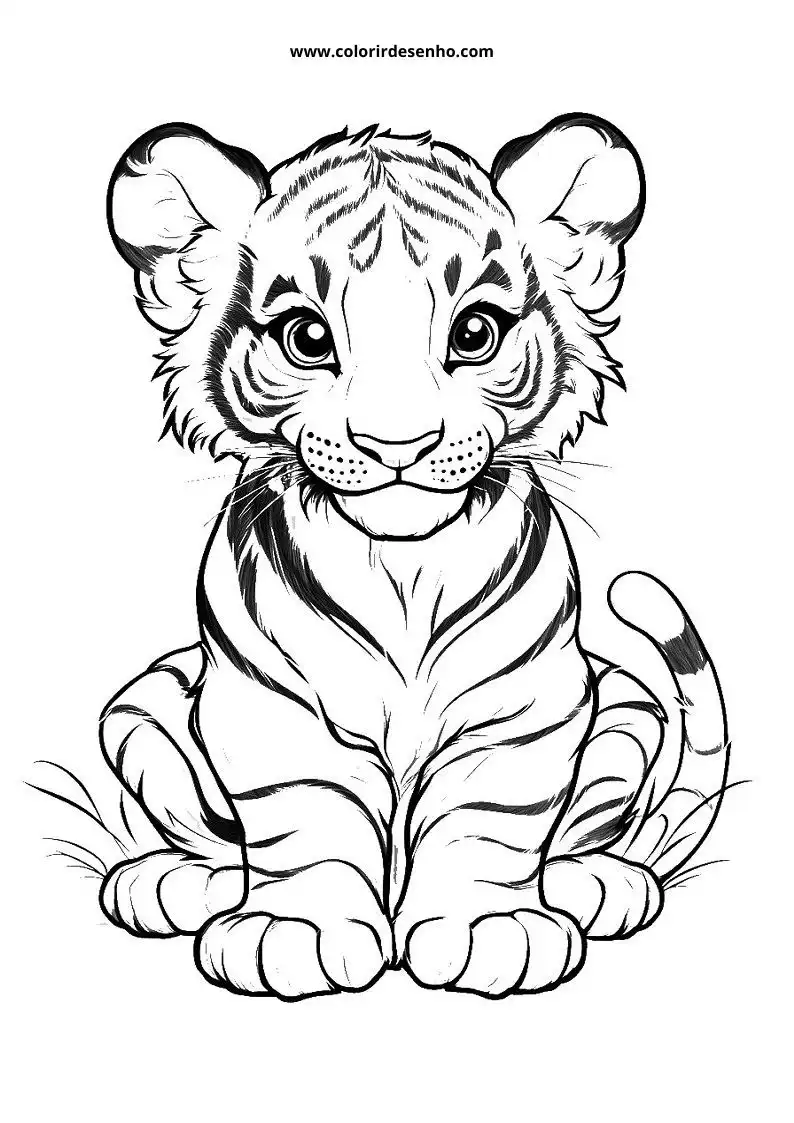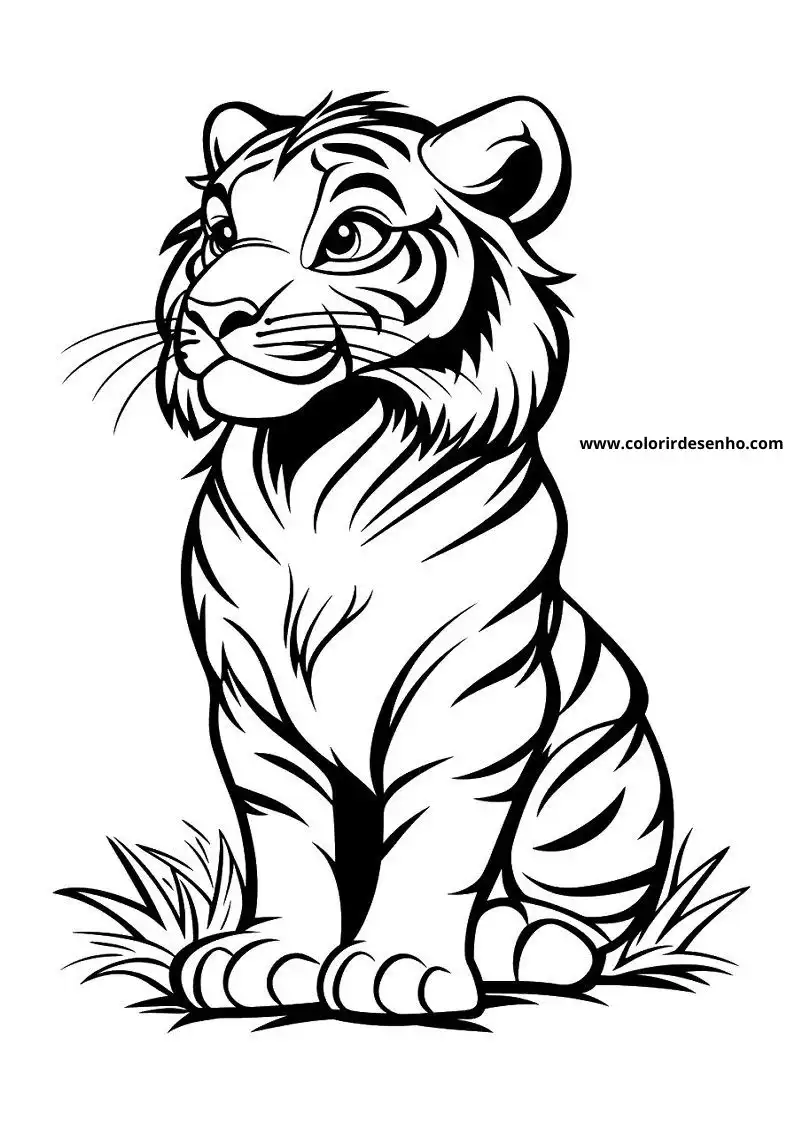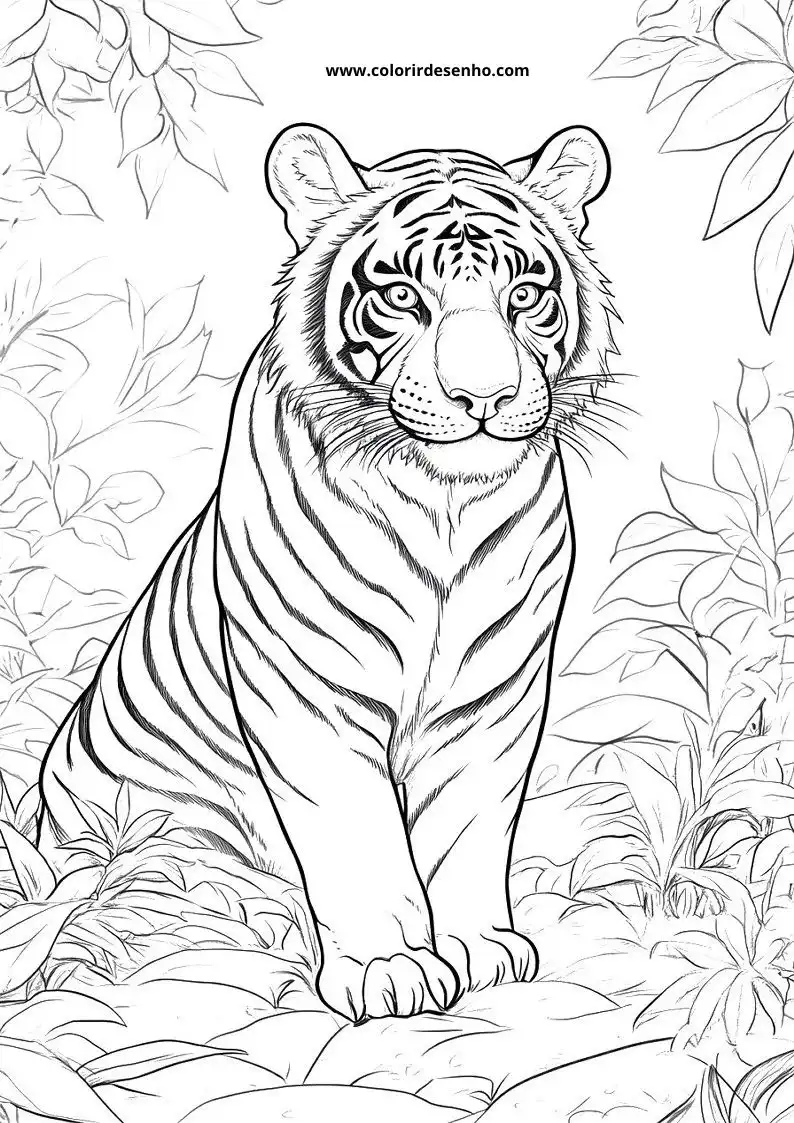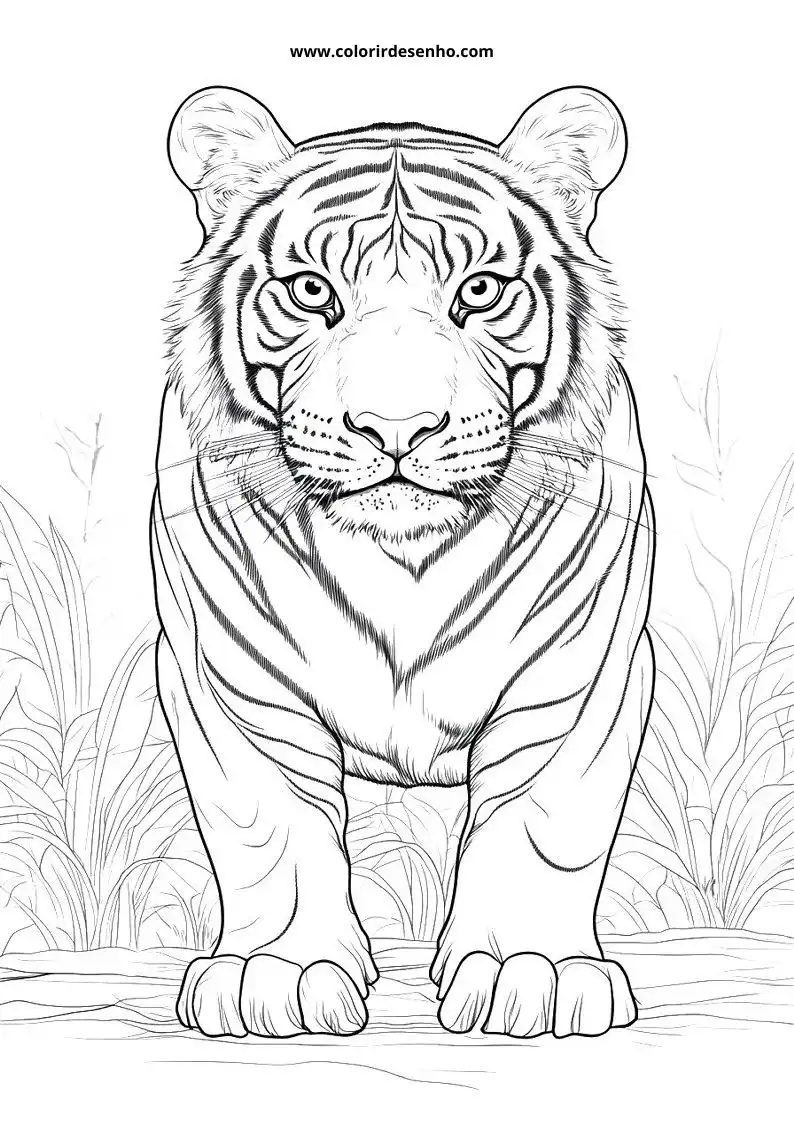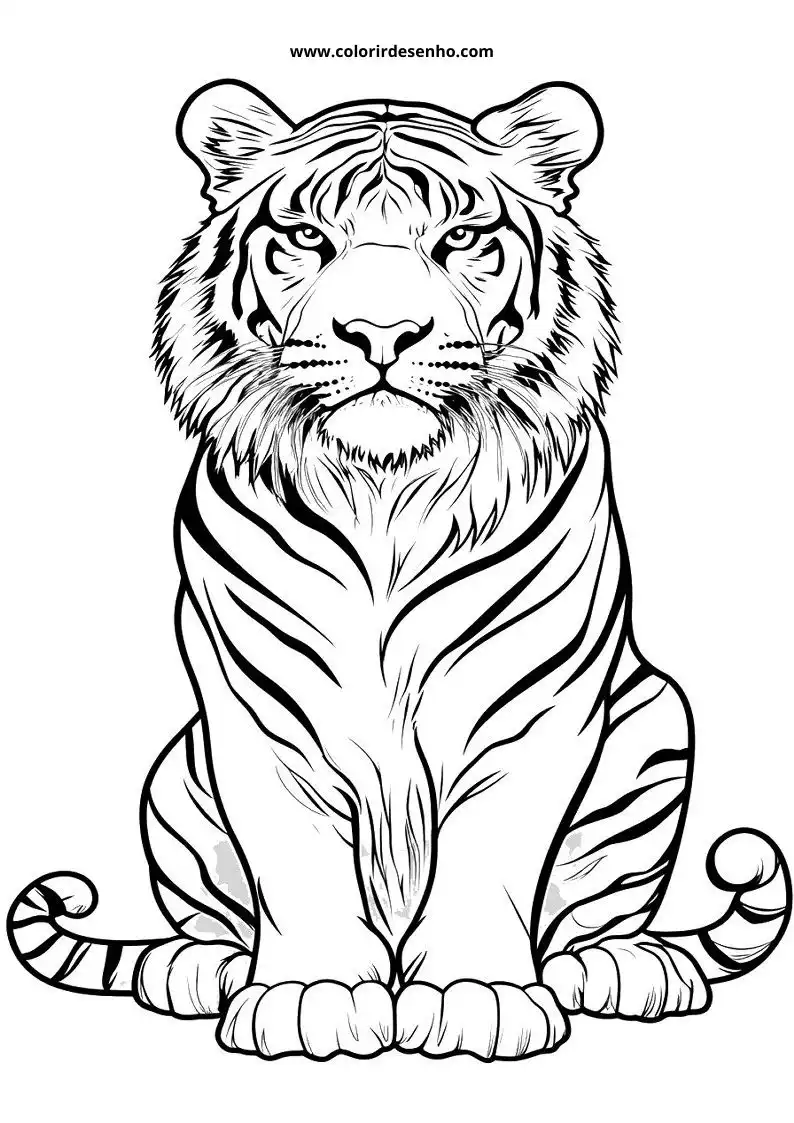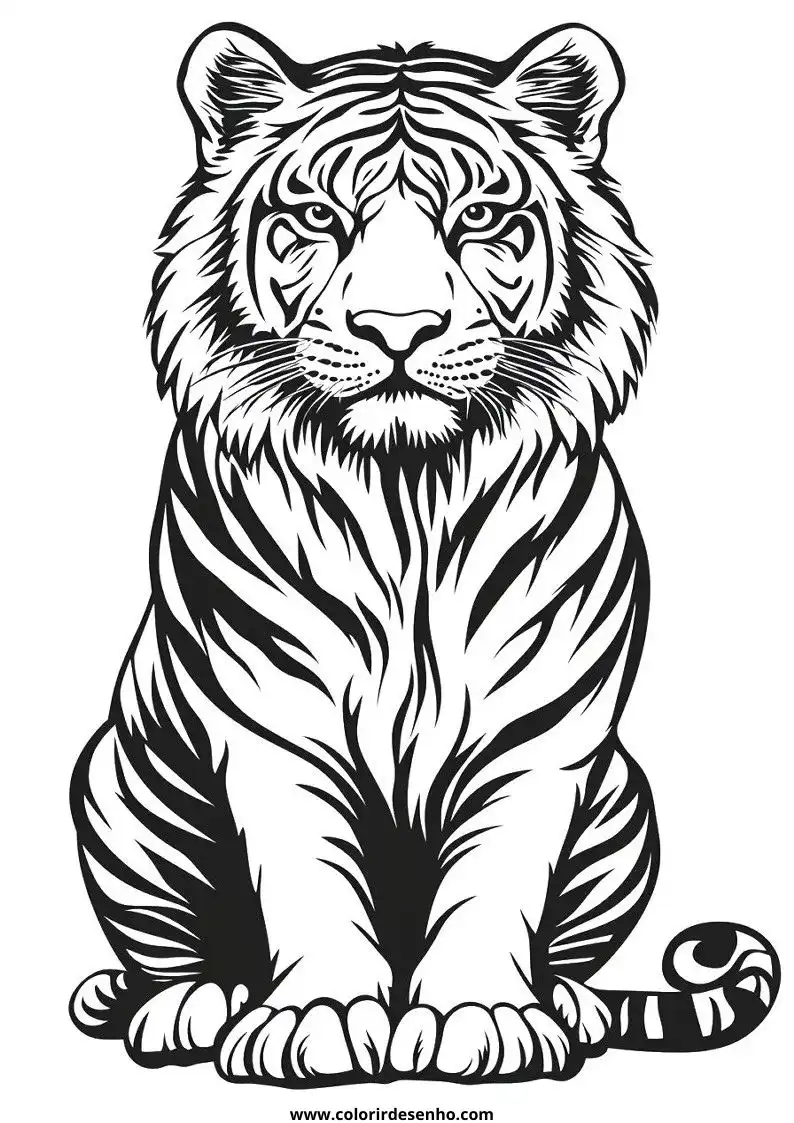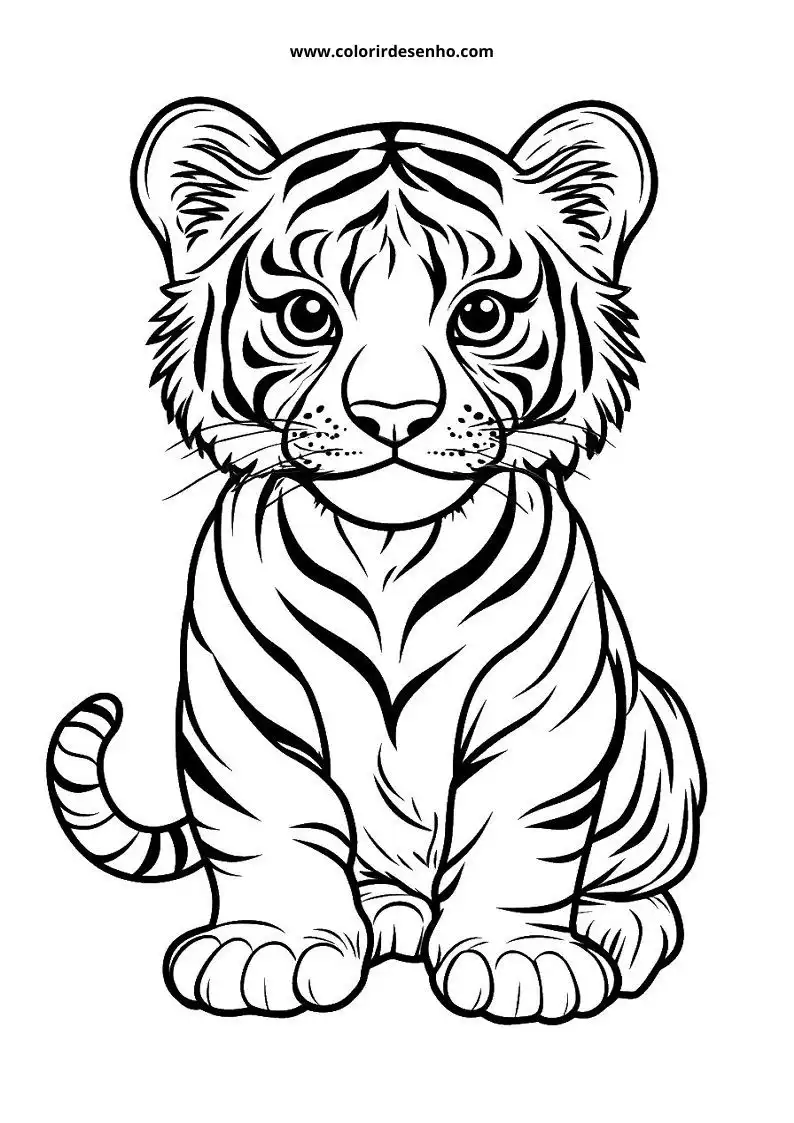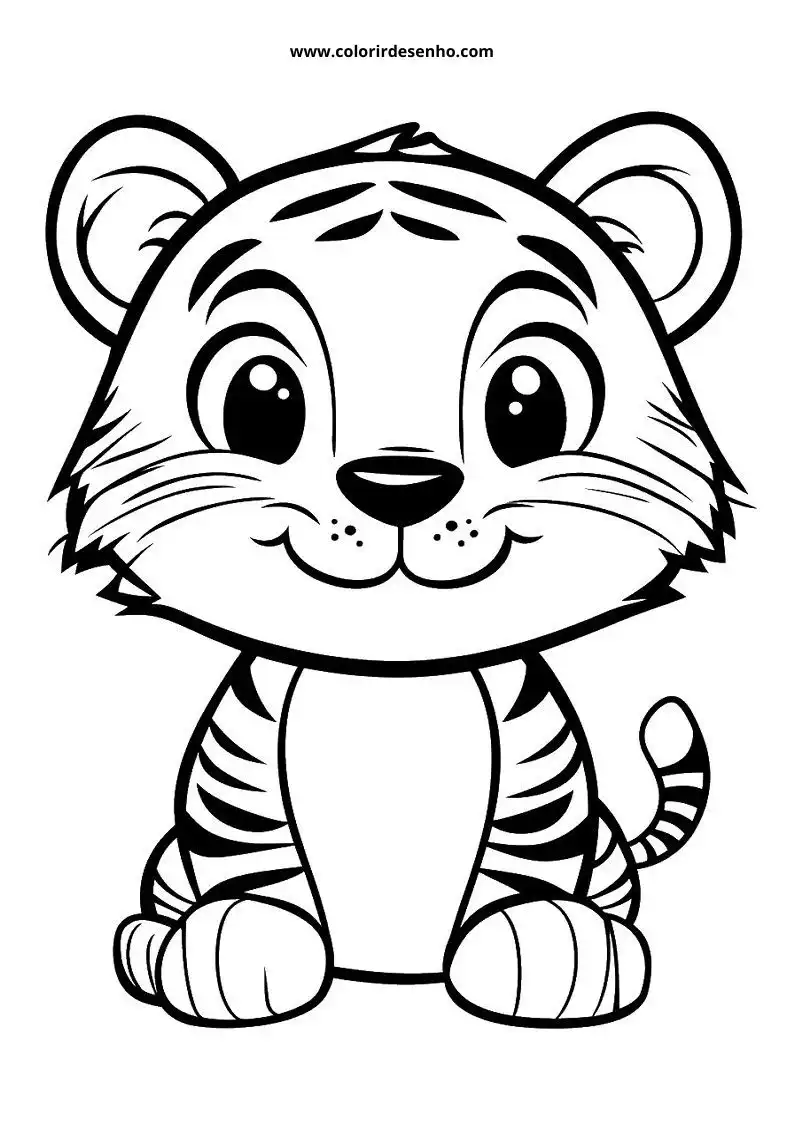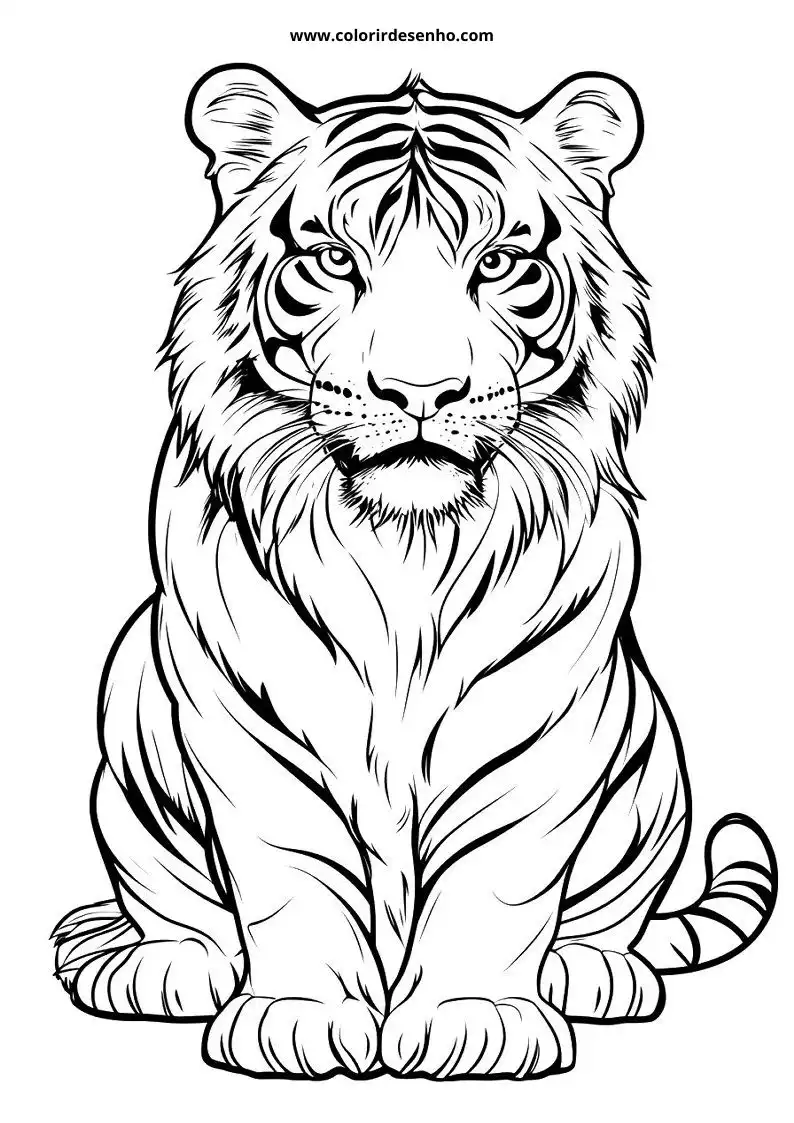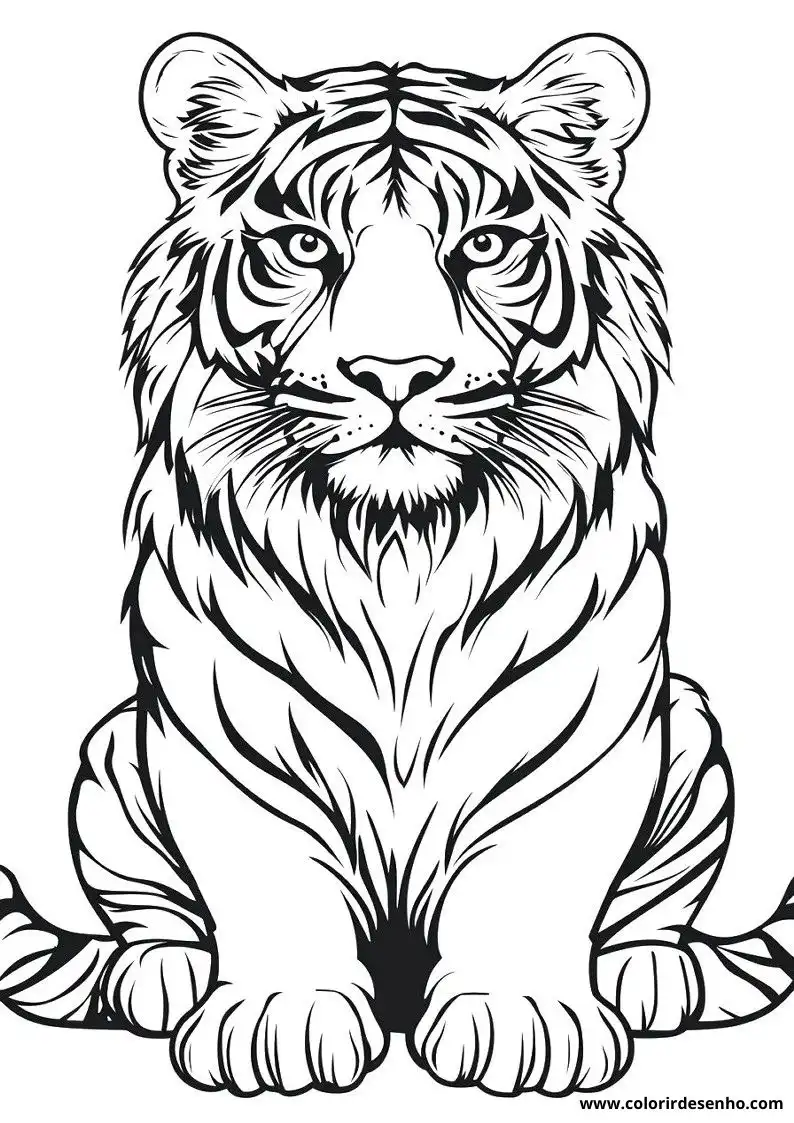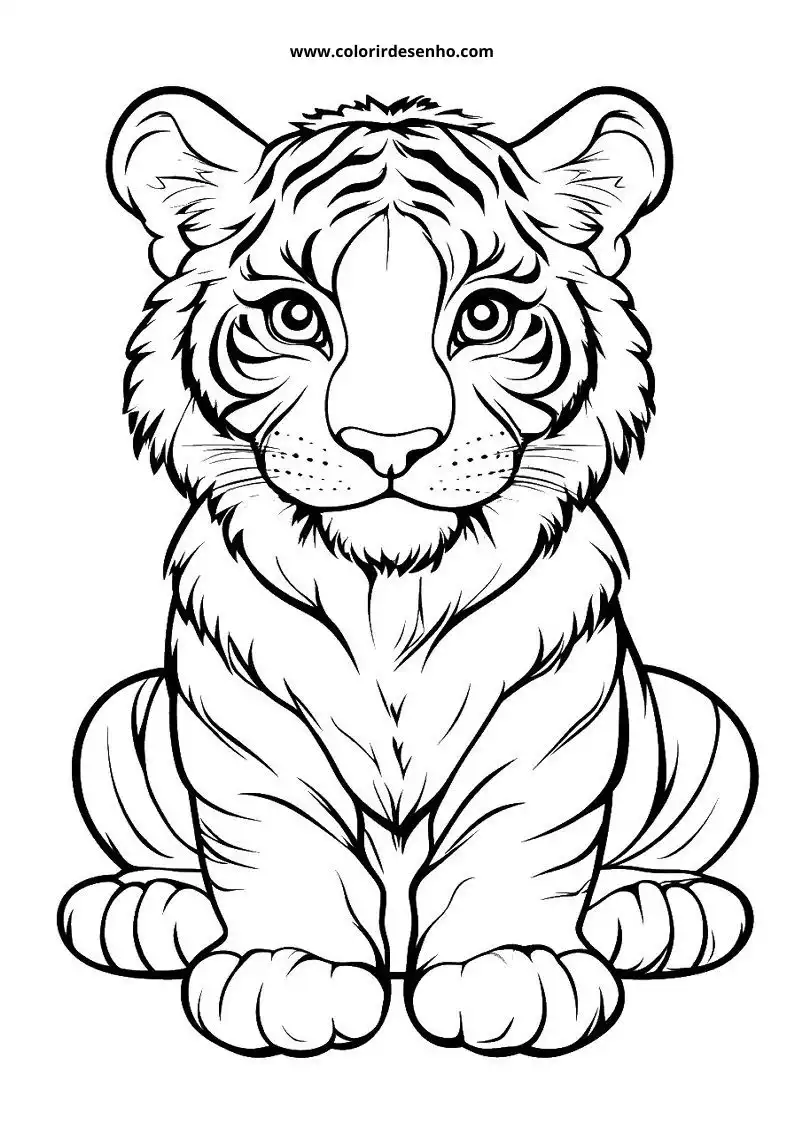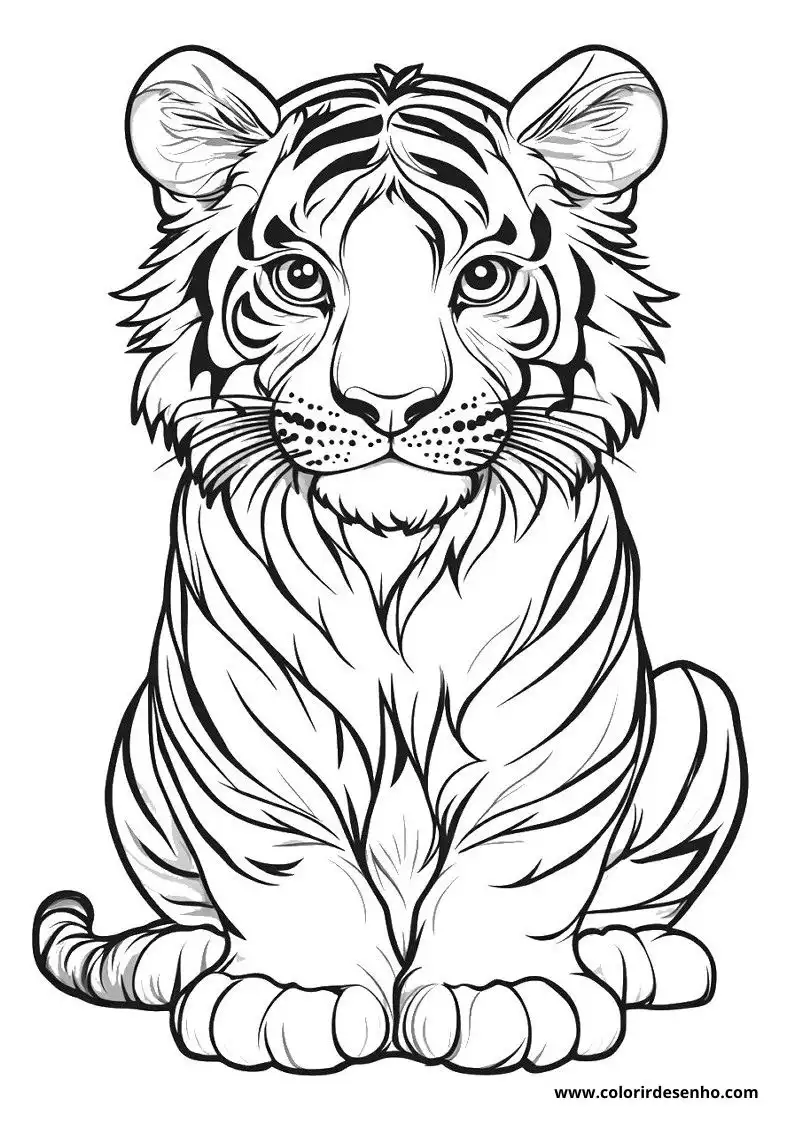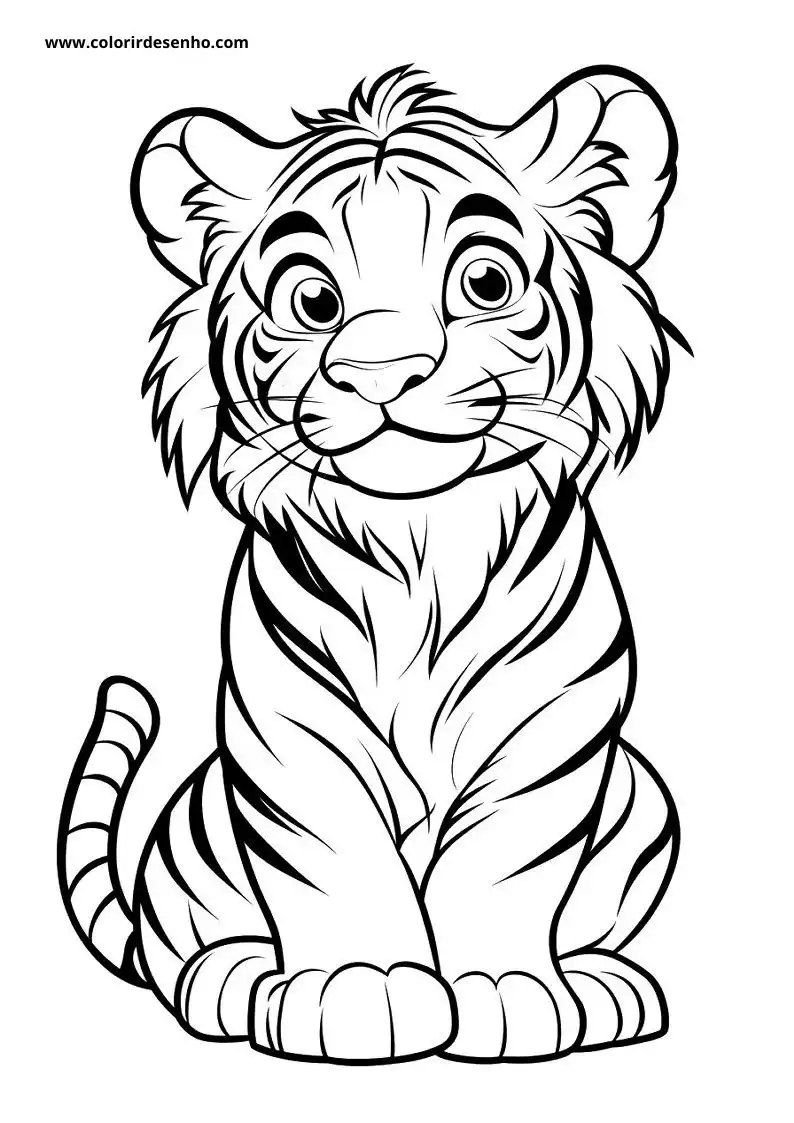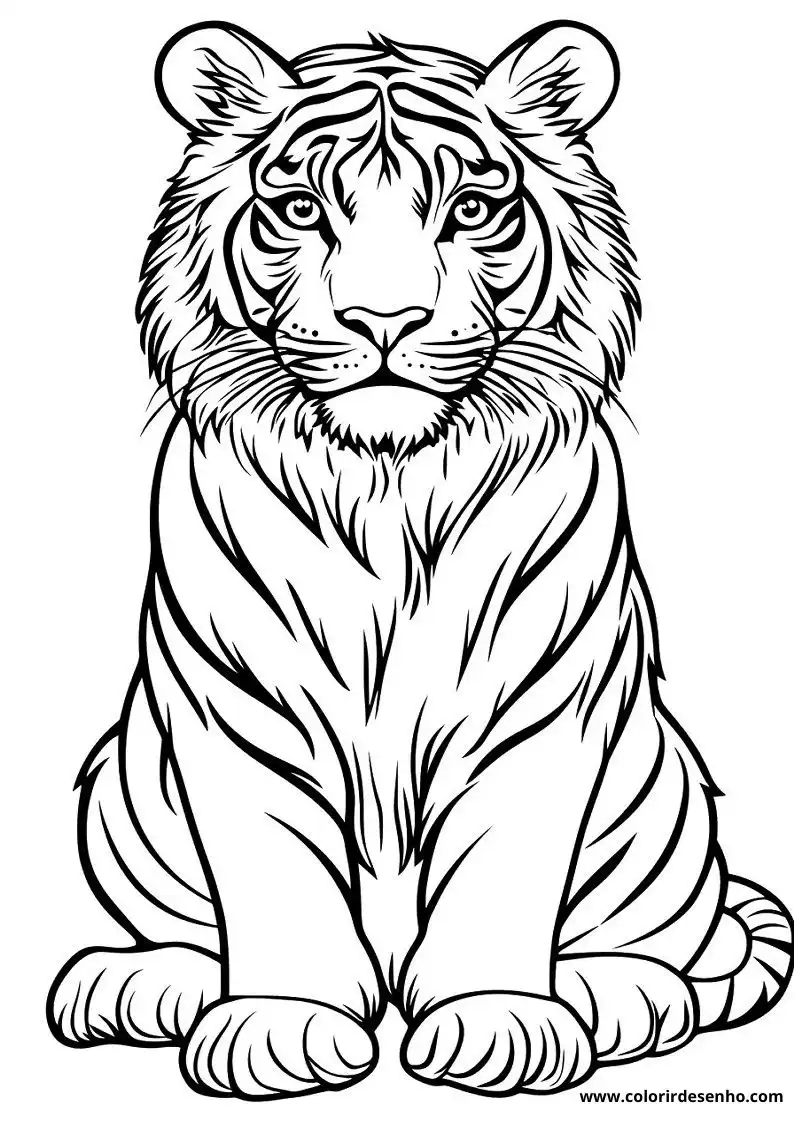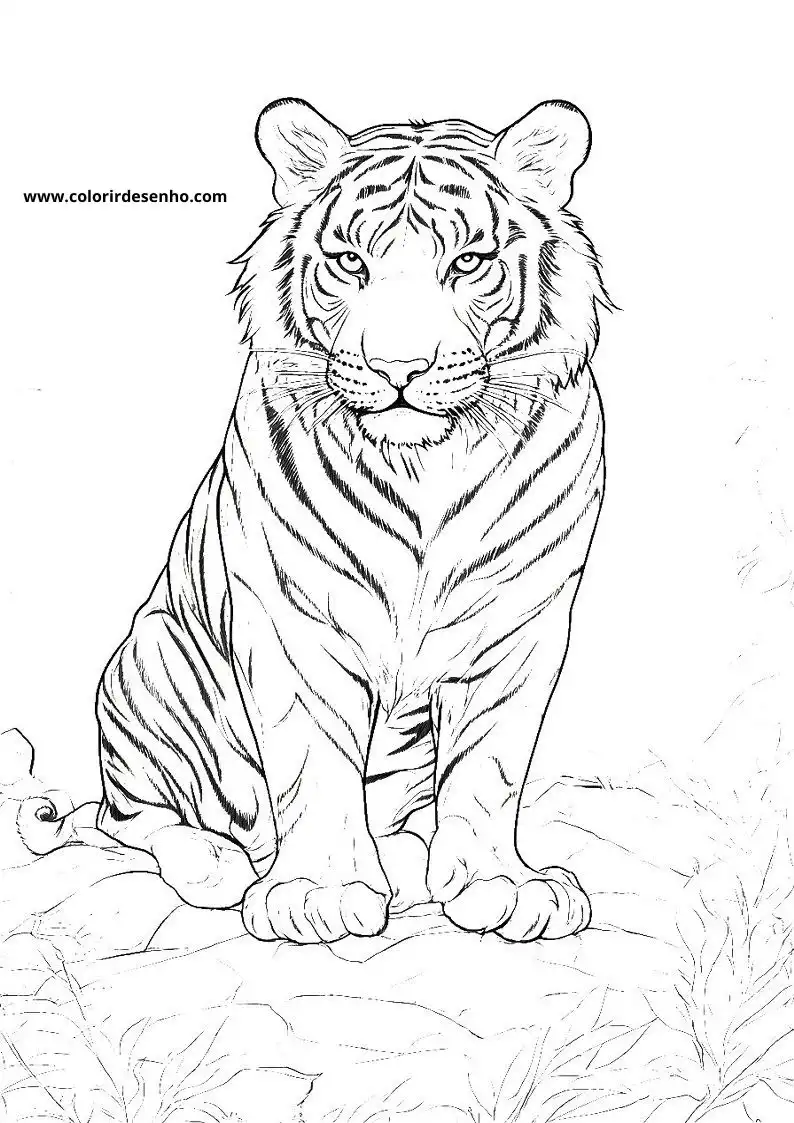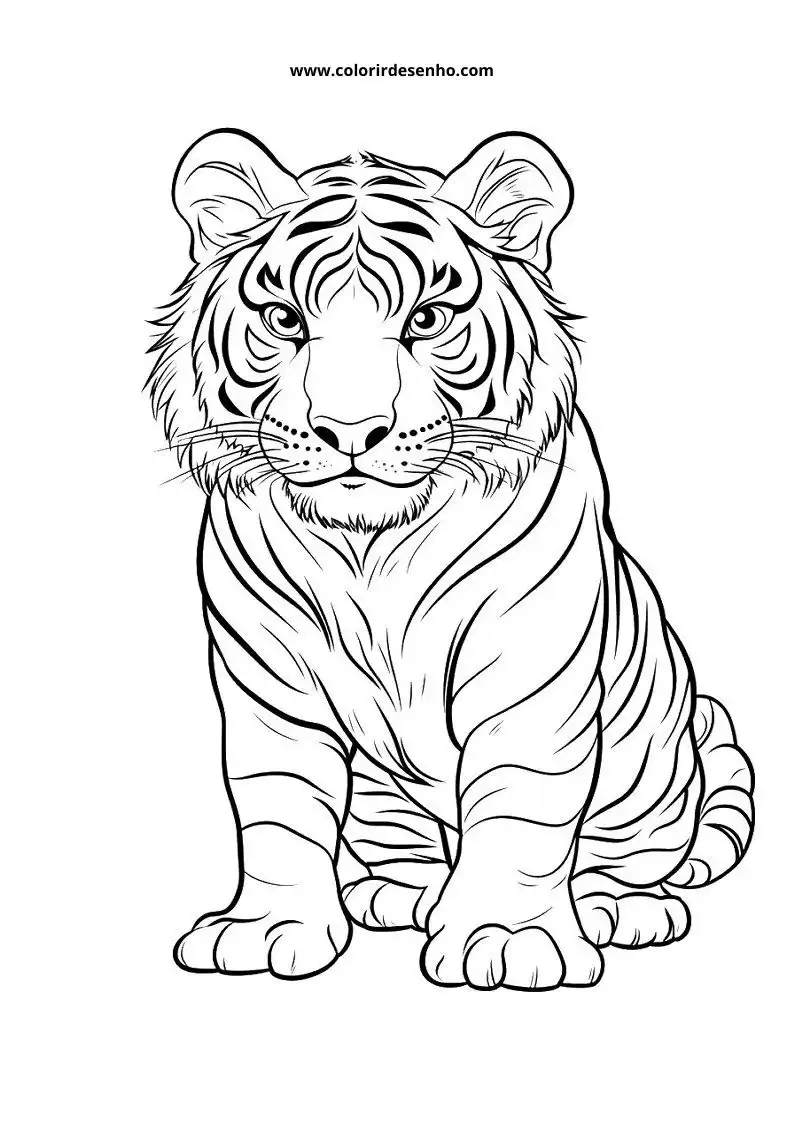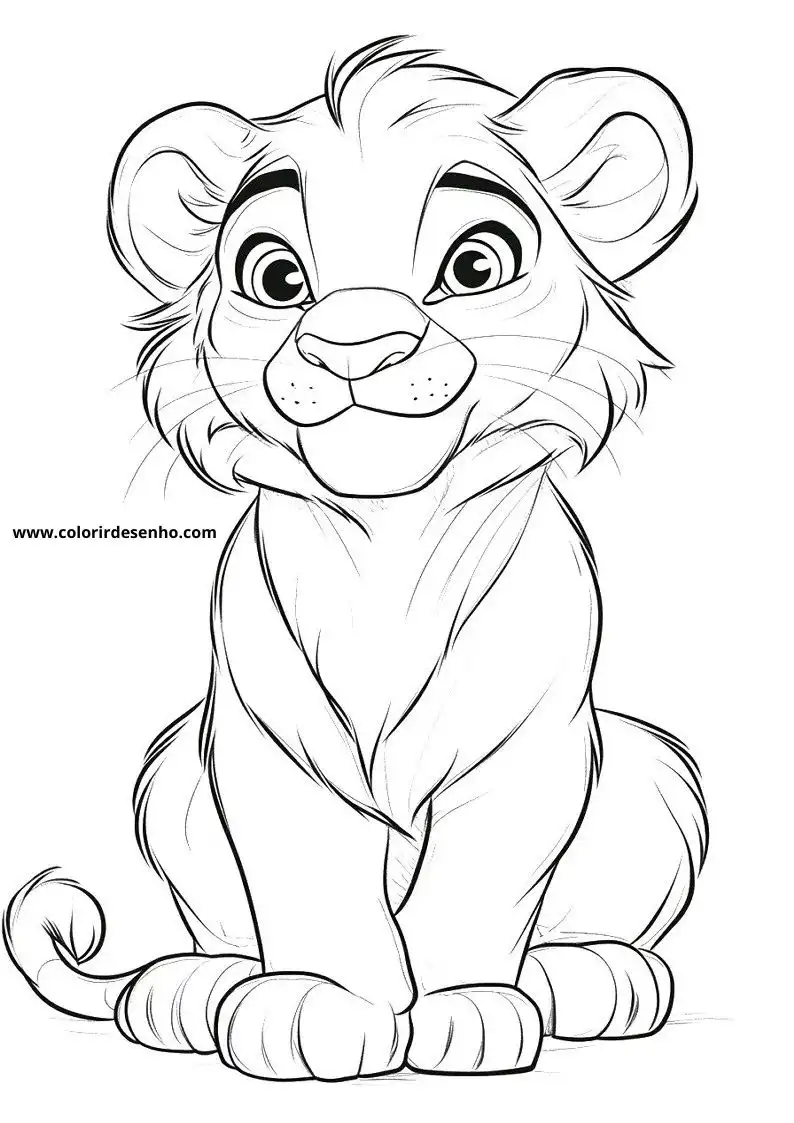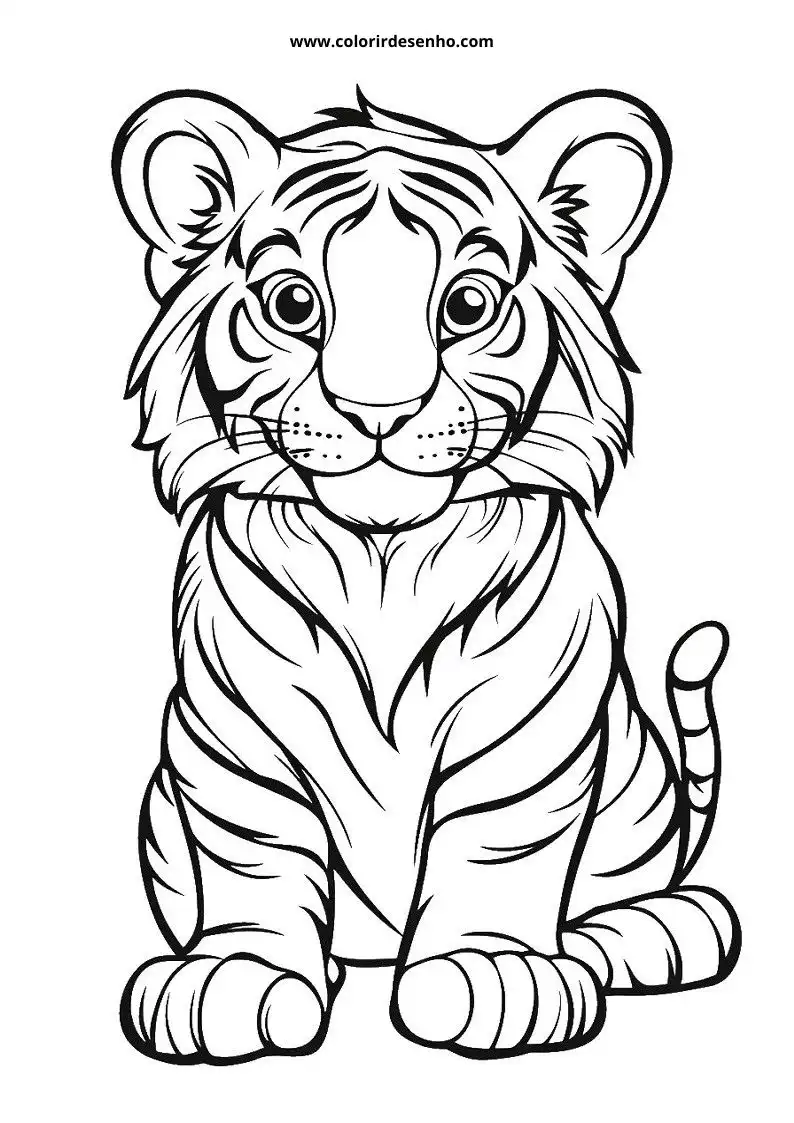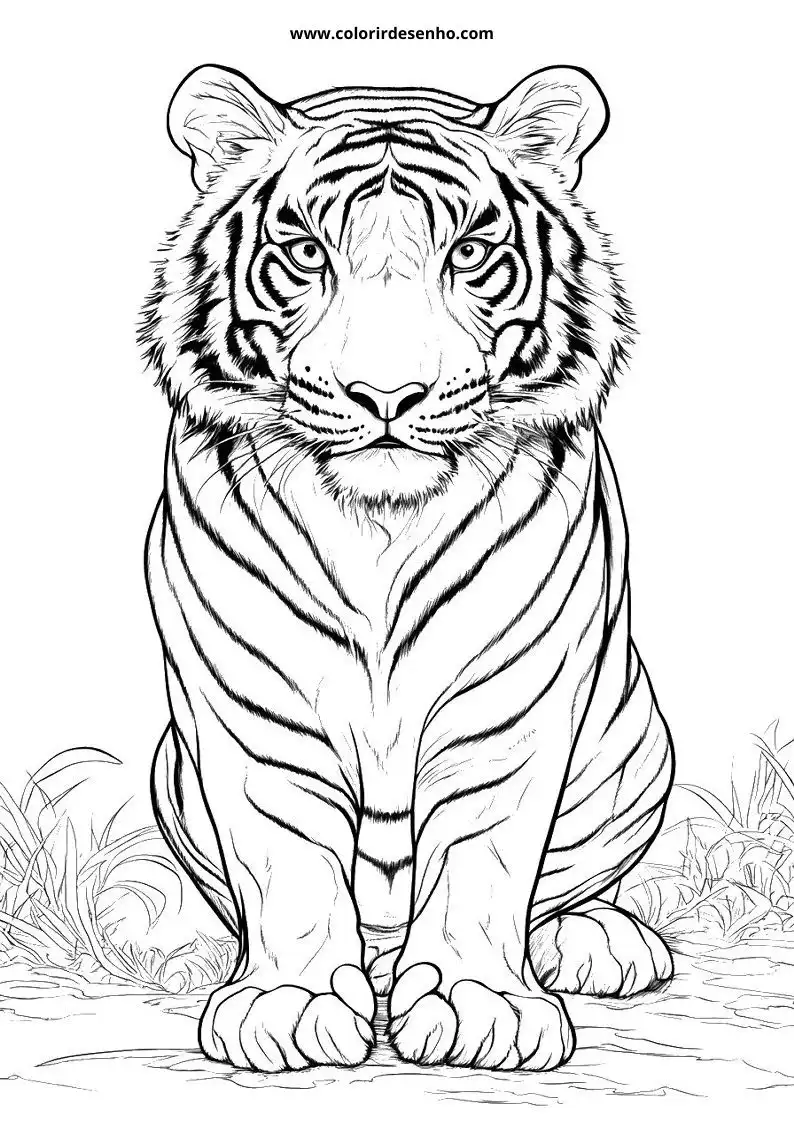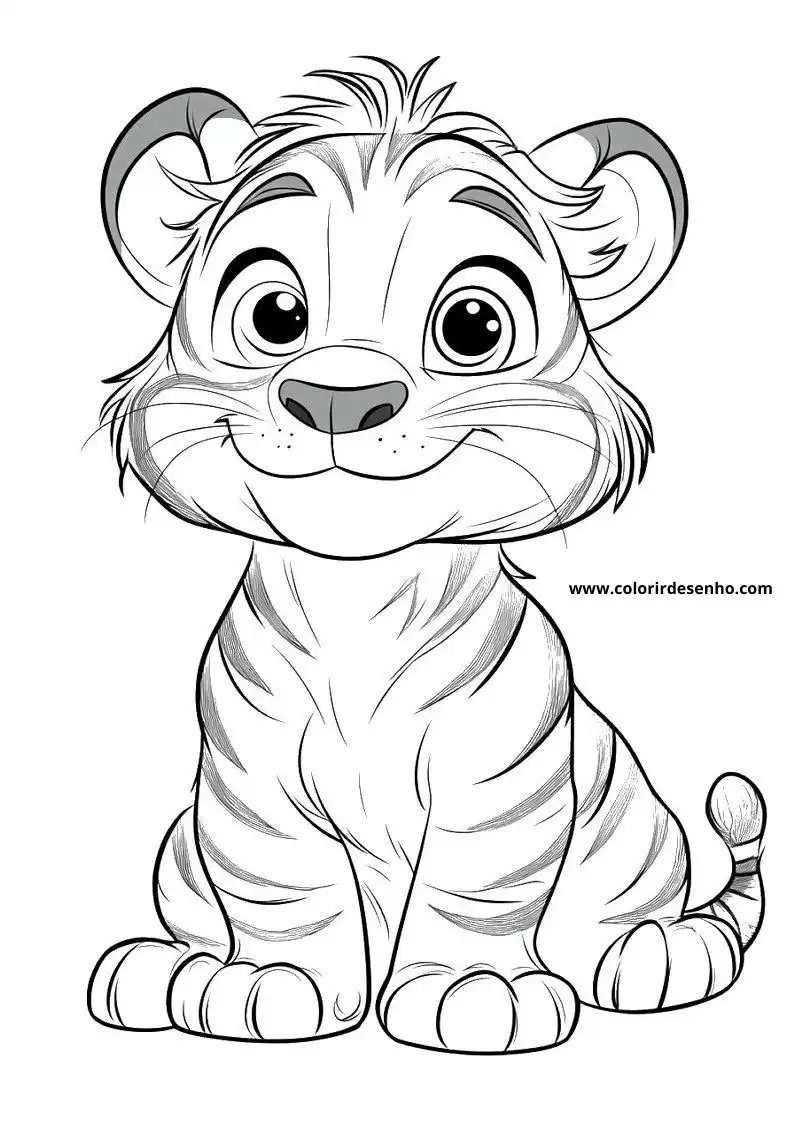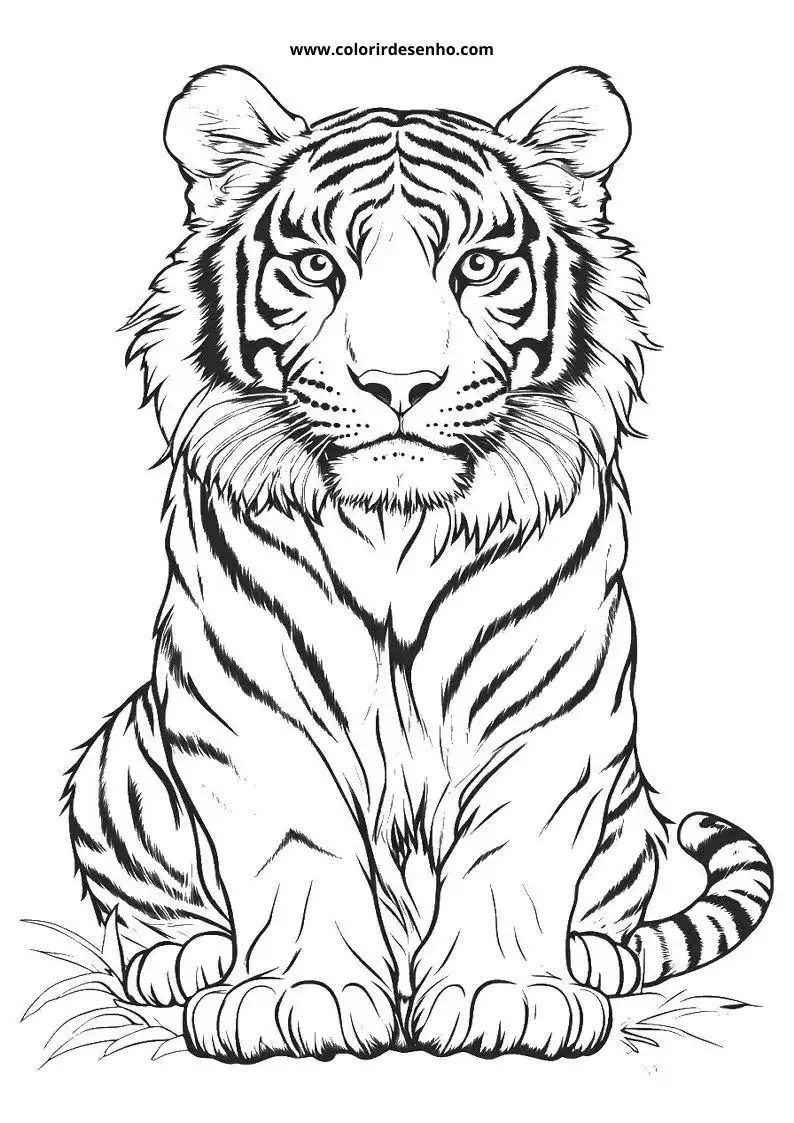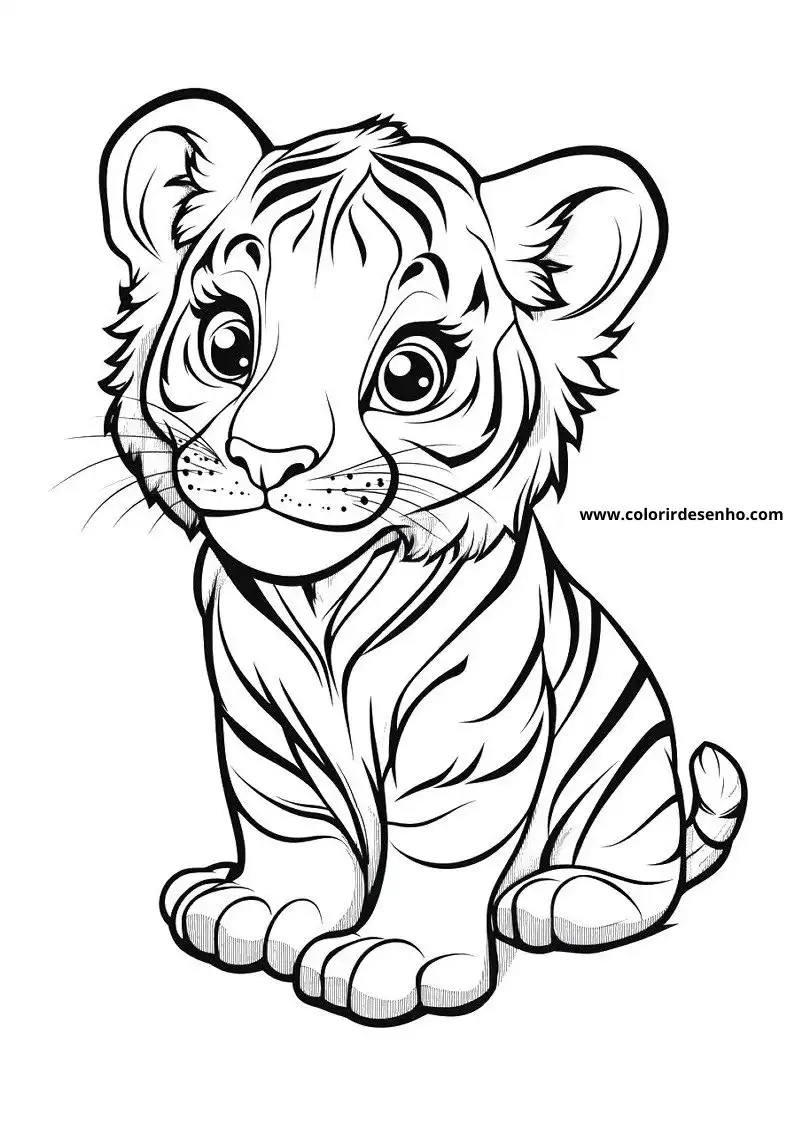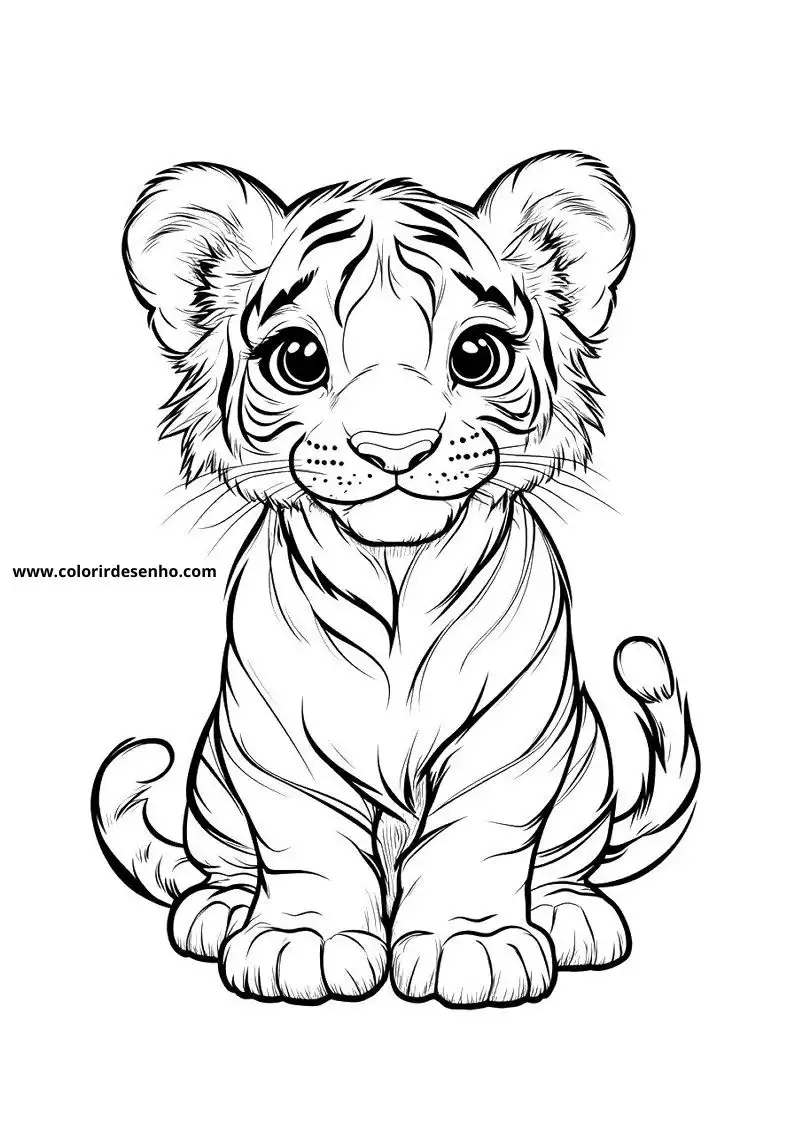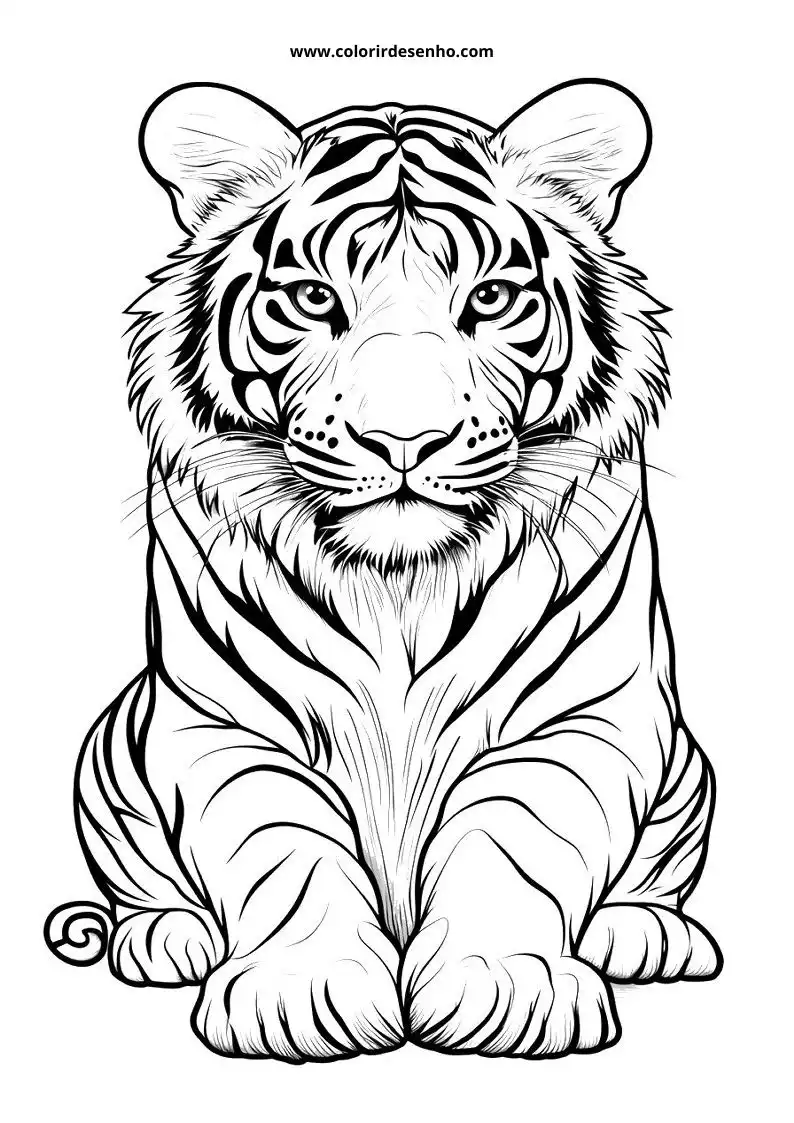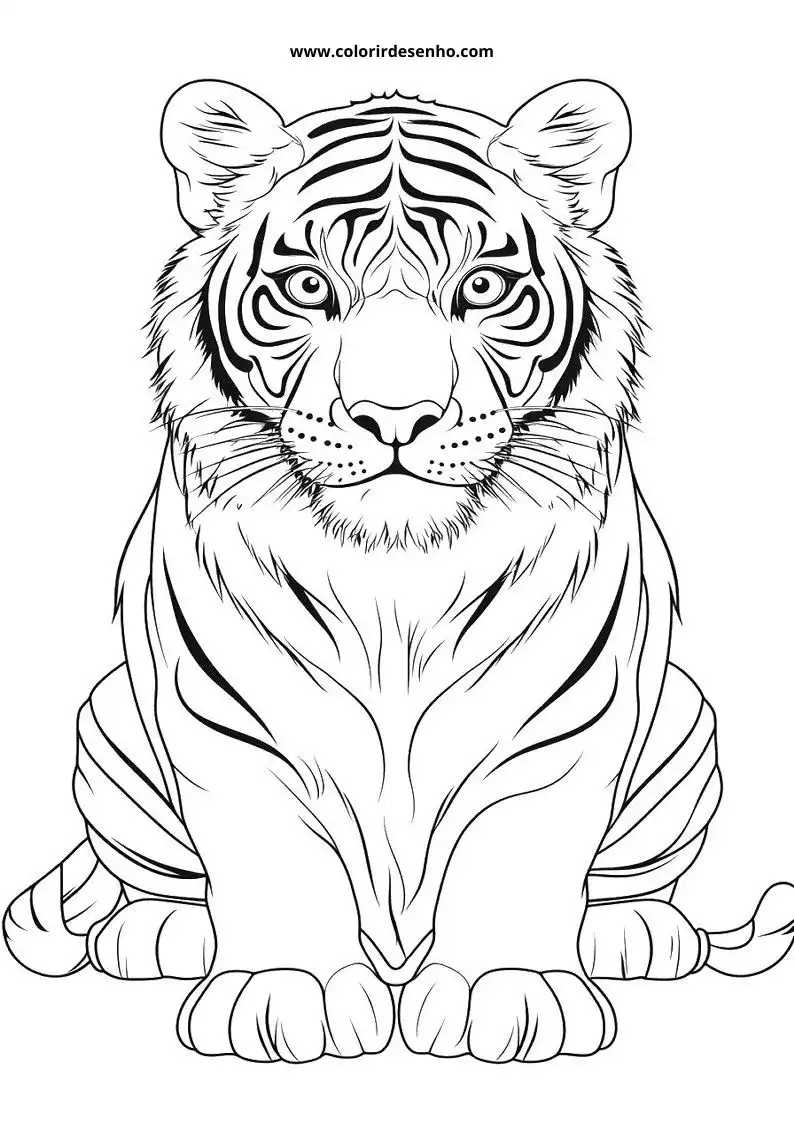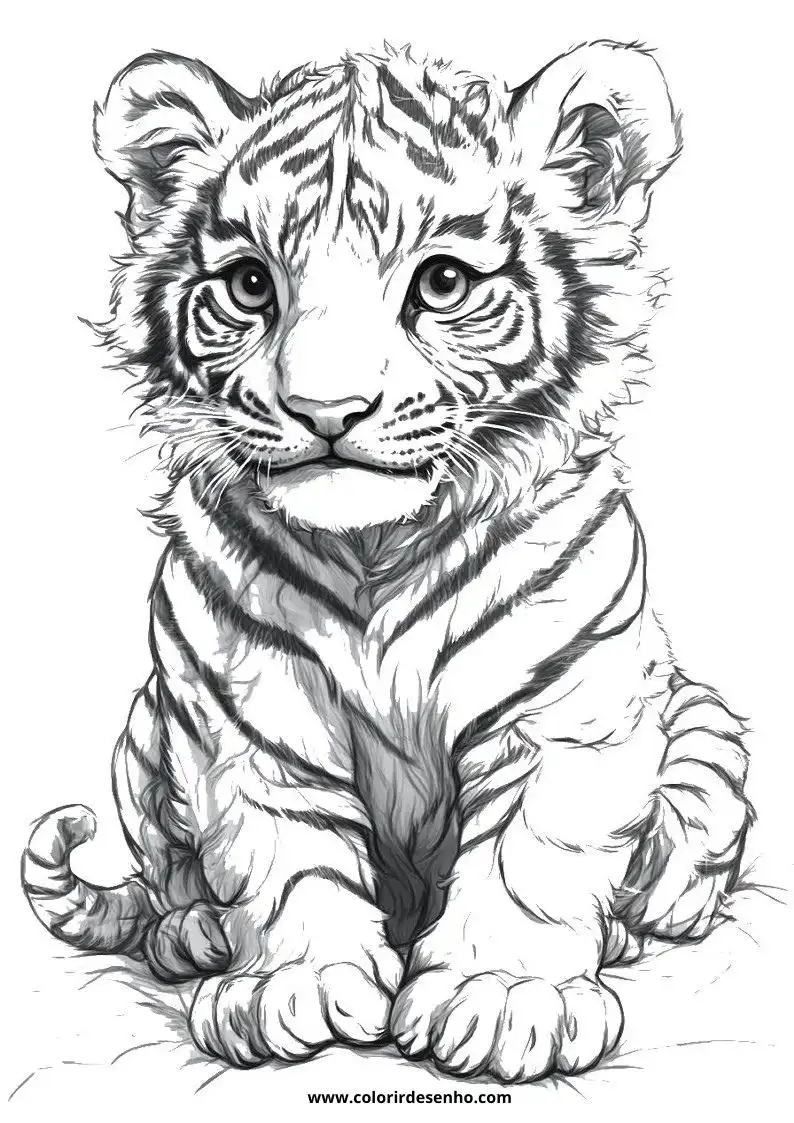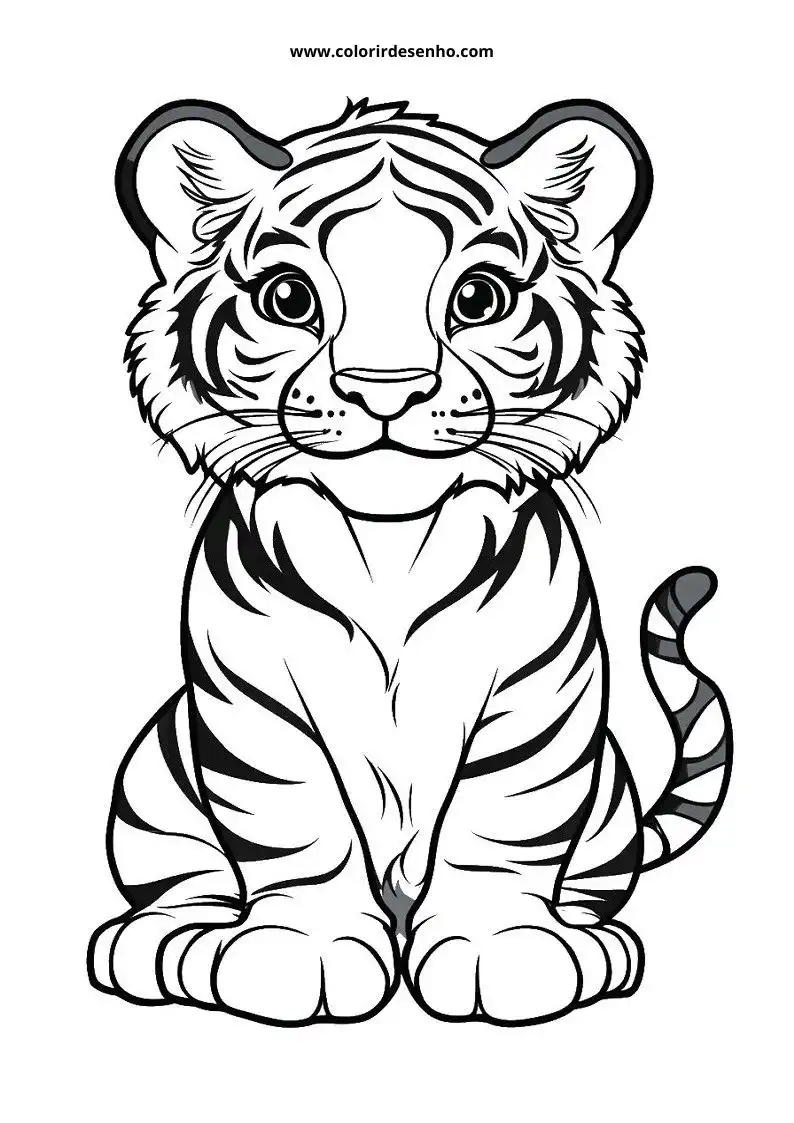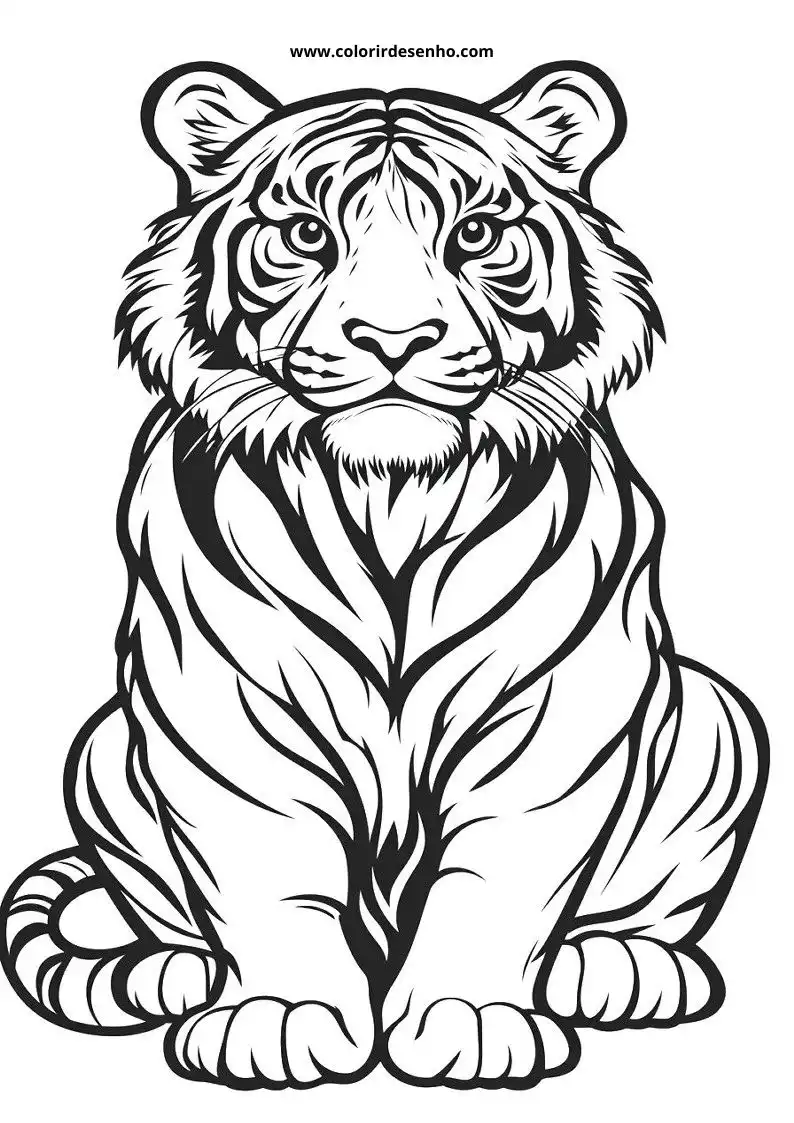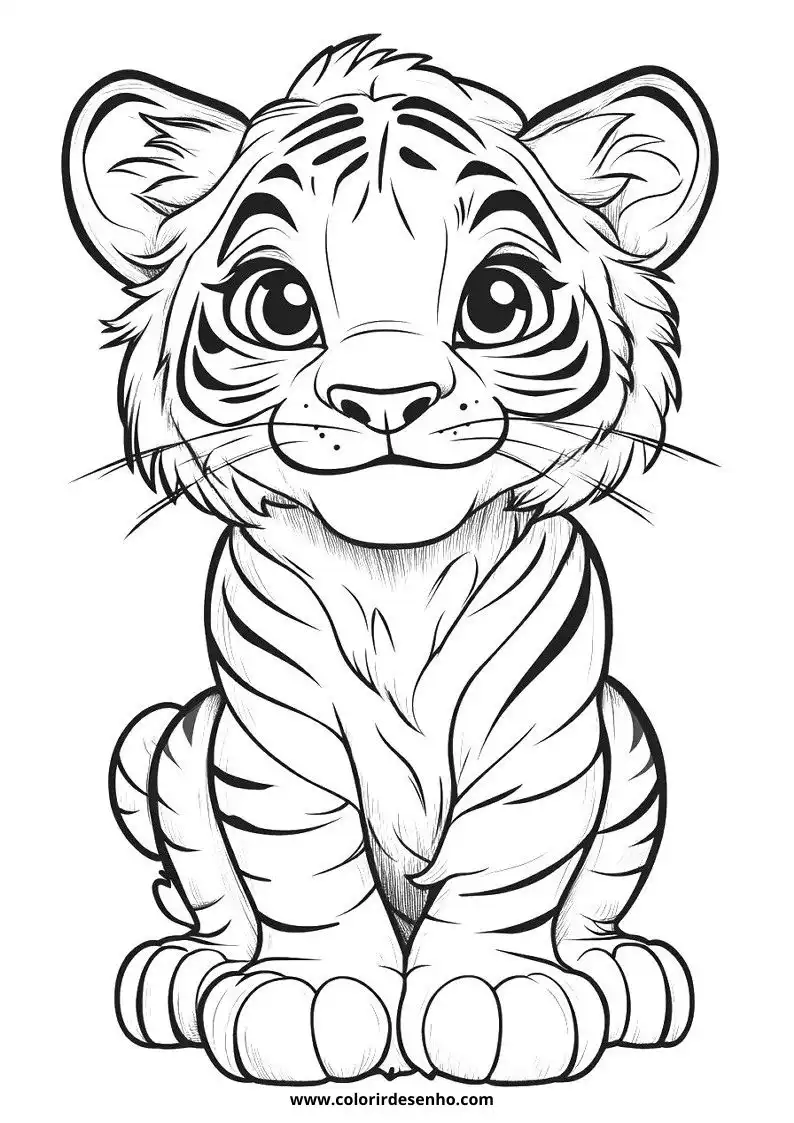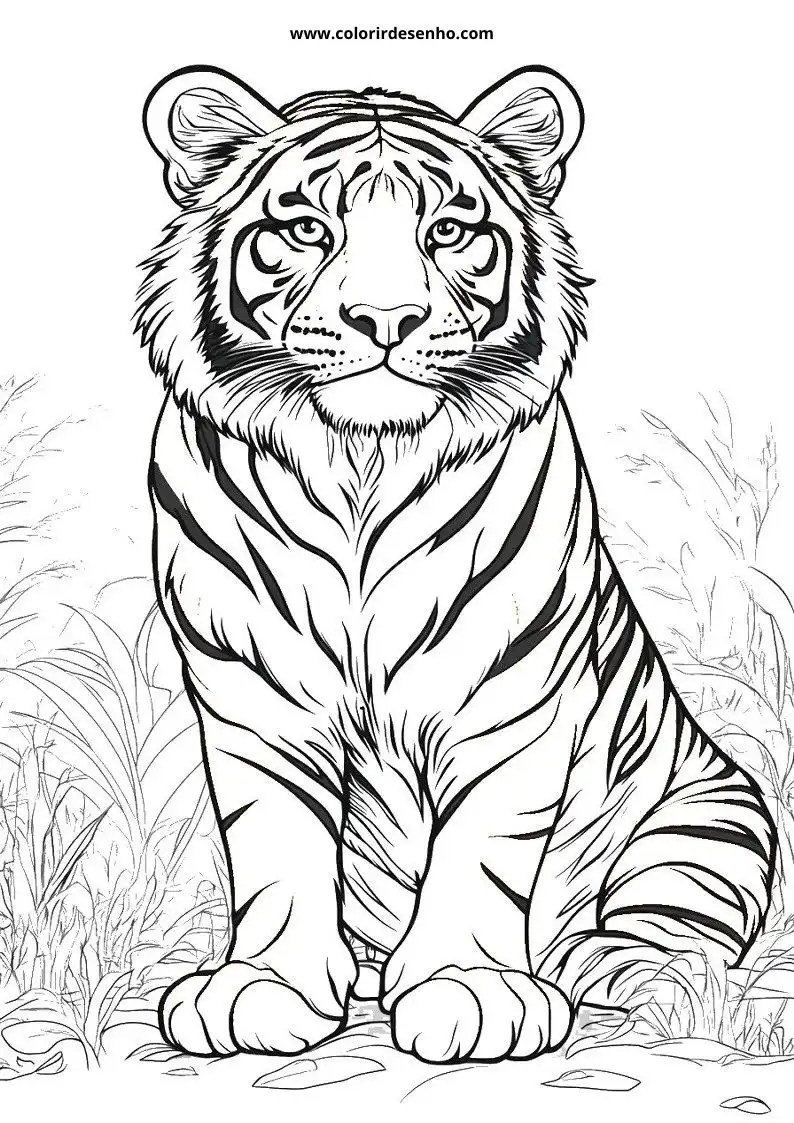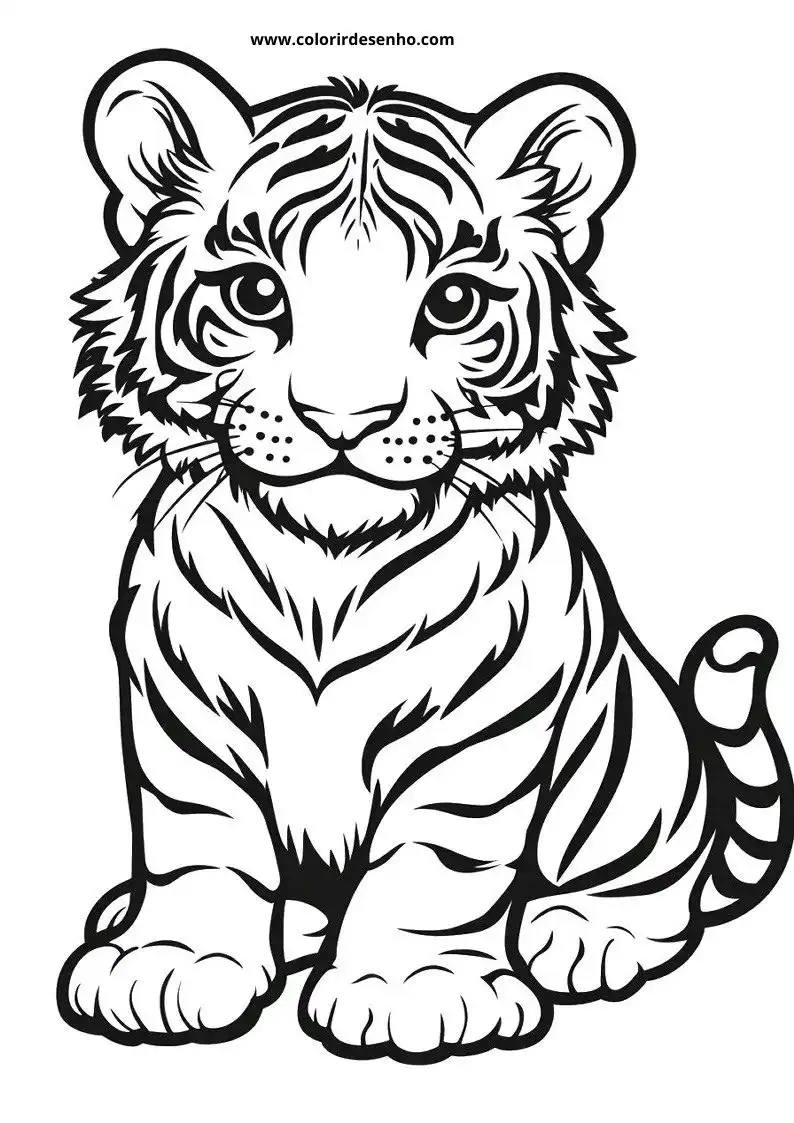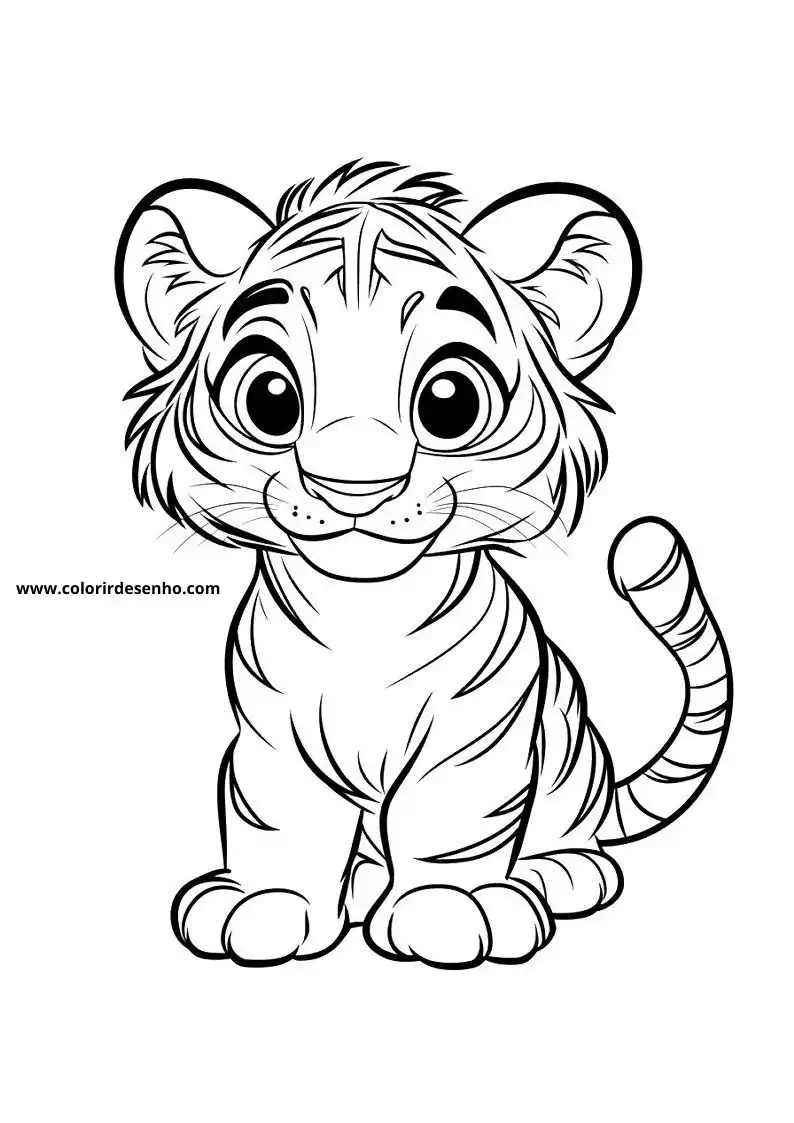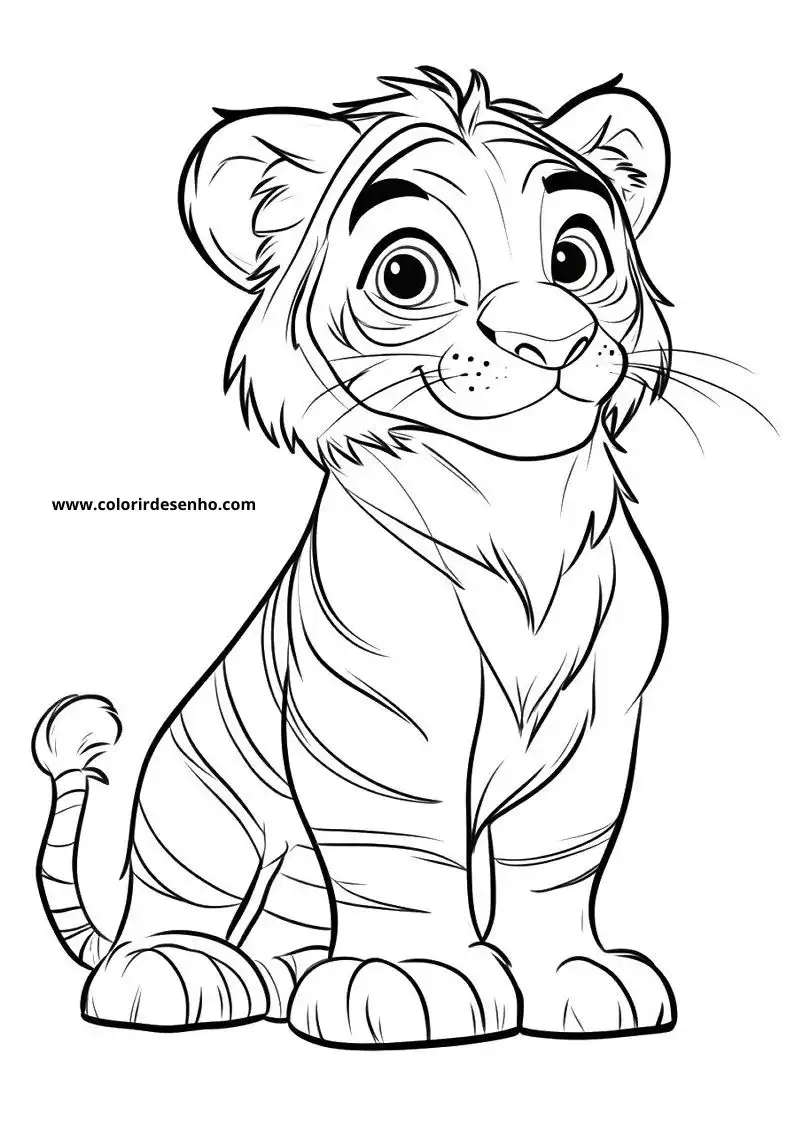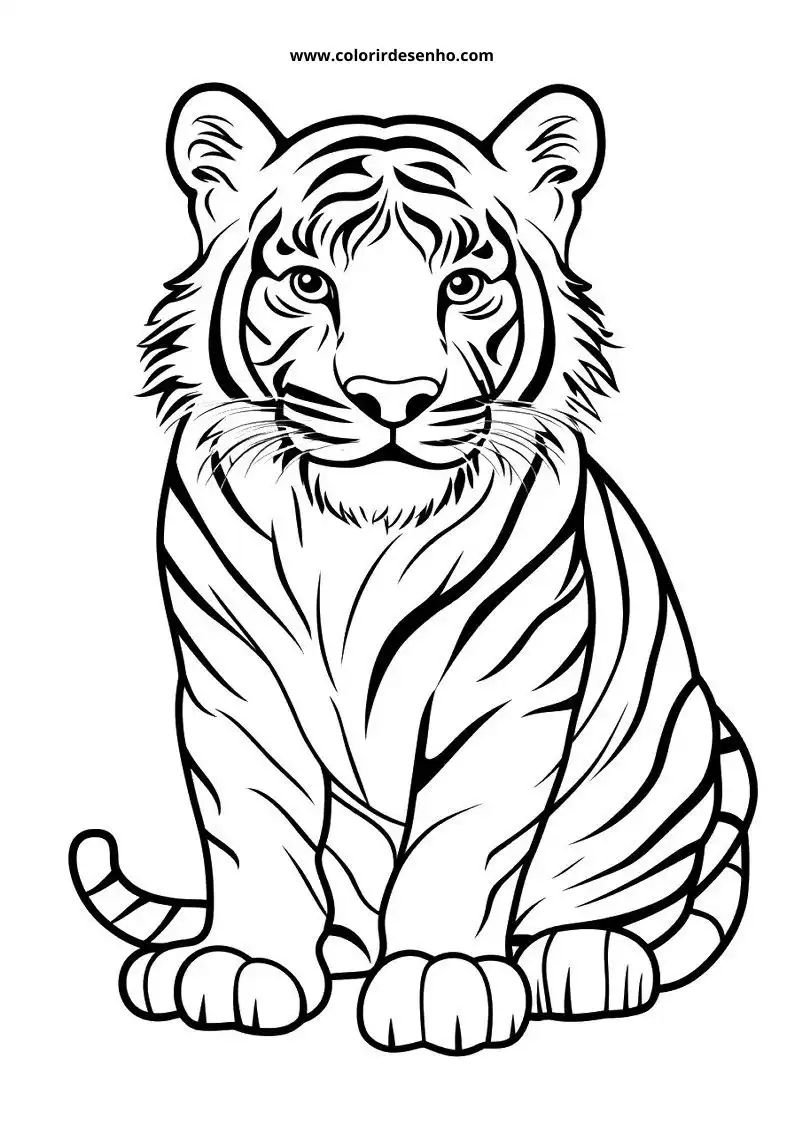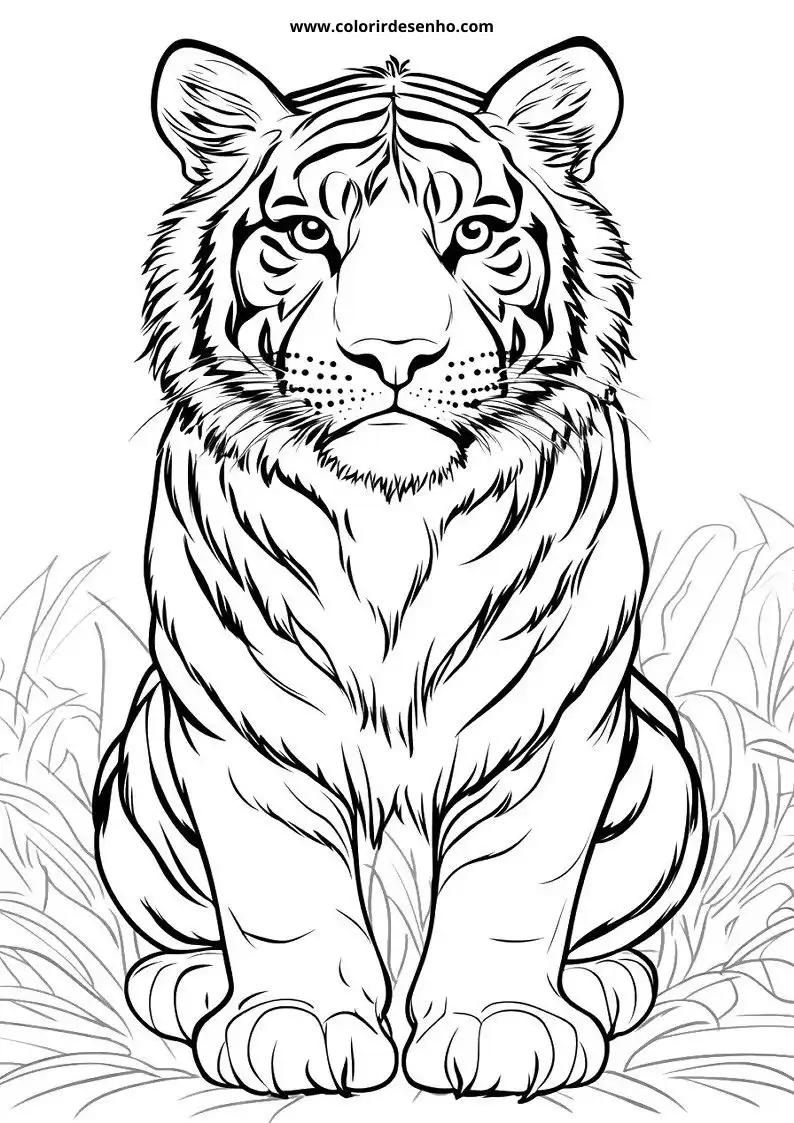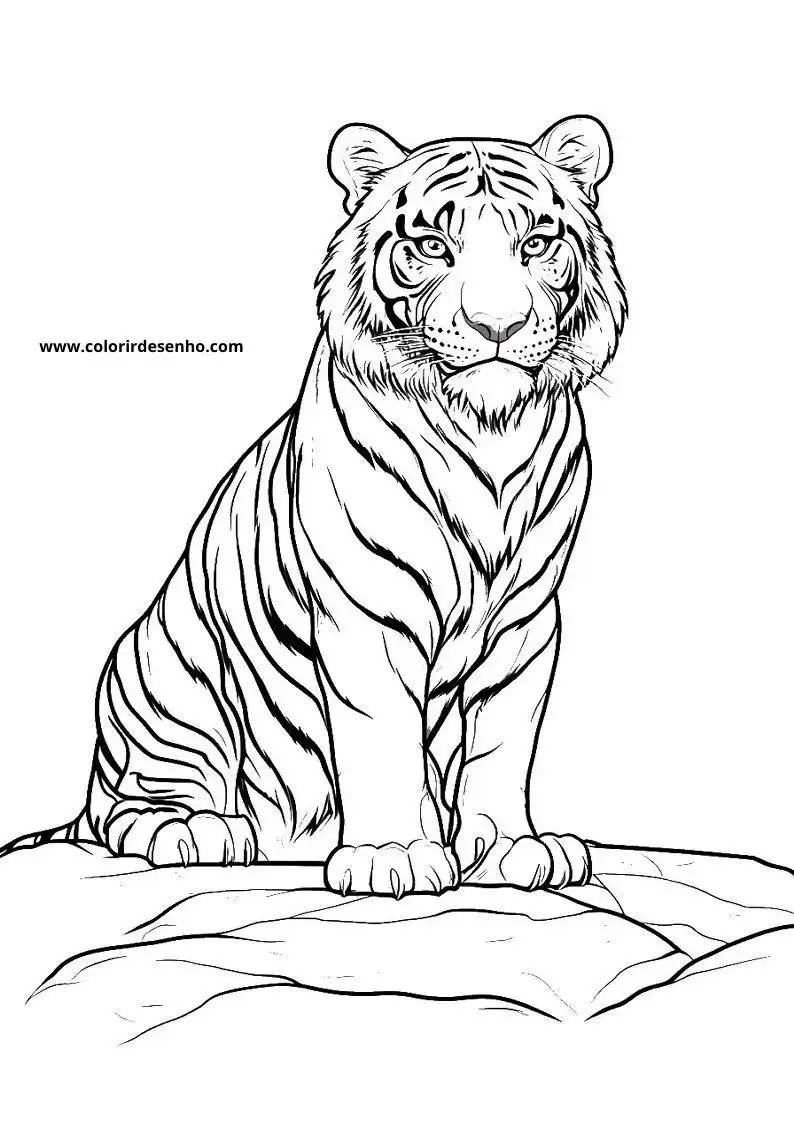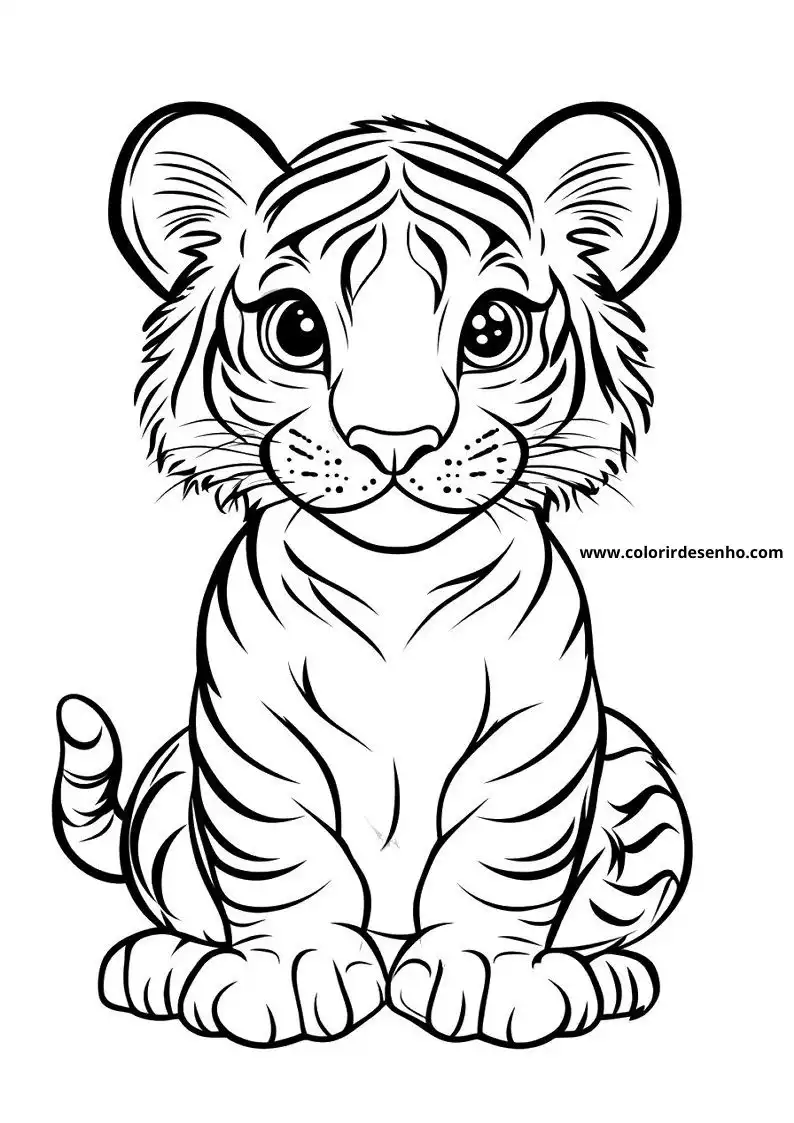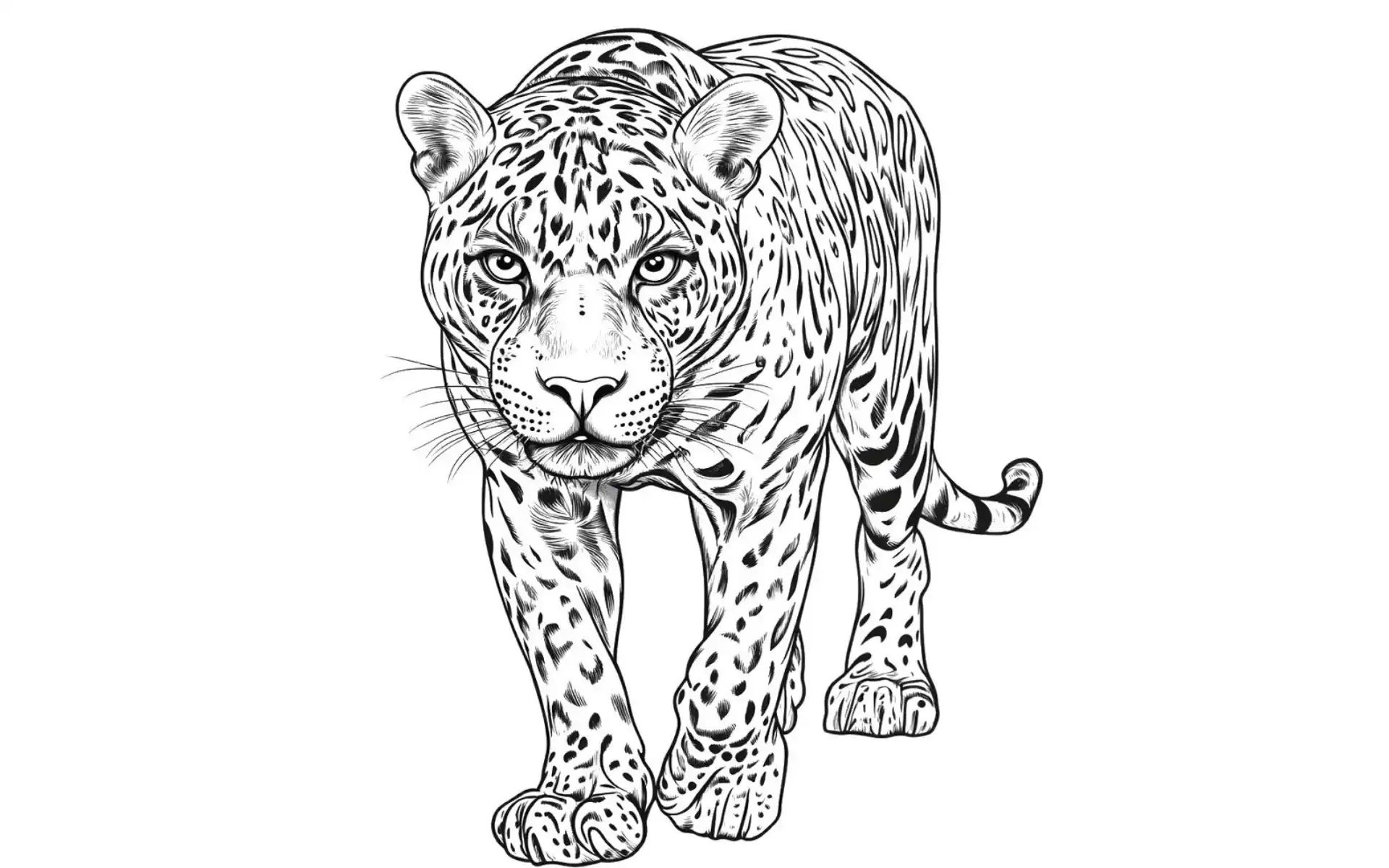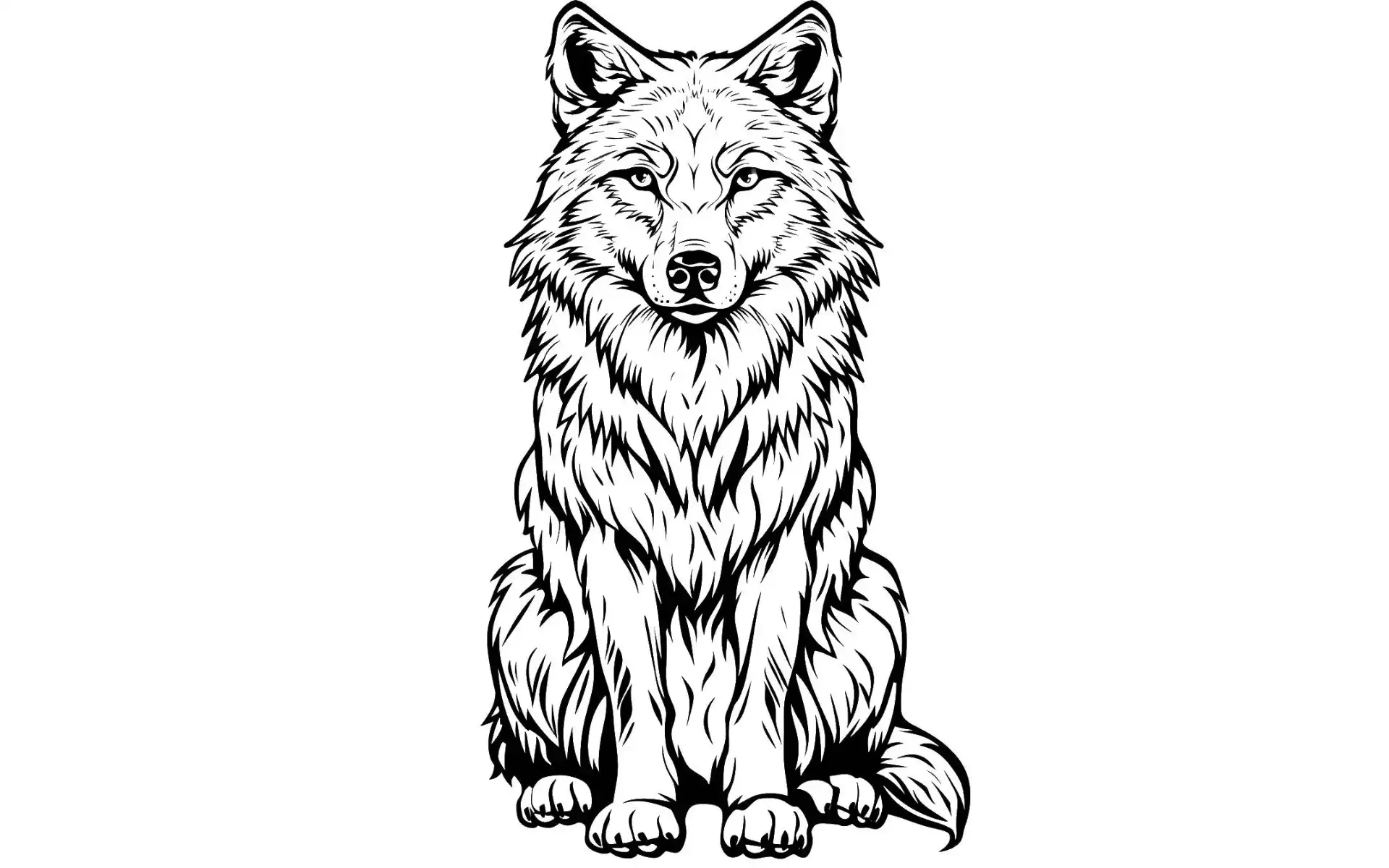Tiger Coloring Pages – 203 Tigers to Color
If you’re on the hunt for Tiger Coloring Pages to print and enjoy, you’ve come to the right place! Tigers are majestic creatures known for their iconic stripes and powerful gaze. Not only is coloring a relaxing activity, but it’s also an incredible way to learn more about this amazing predator. With 203 options to choose from, you’ll find a wide variety of tiger images to print and unleash your creativity!
Free Printable Tigers to Color
Tigers have such a striking presence that it’s no surprise they’re popular in coloring books and art activities. Whether in a realistic form or a more cartoonish style, a tiger to color and print is an excellent way to get closer to these felines. The best part is, you can print and color as many as you like!
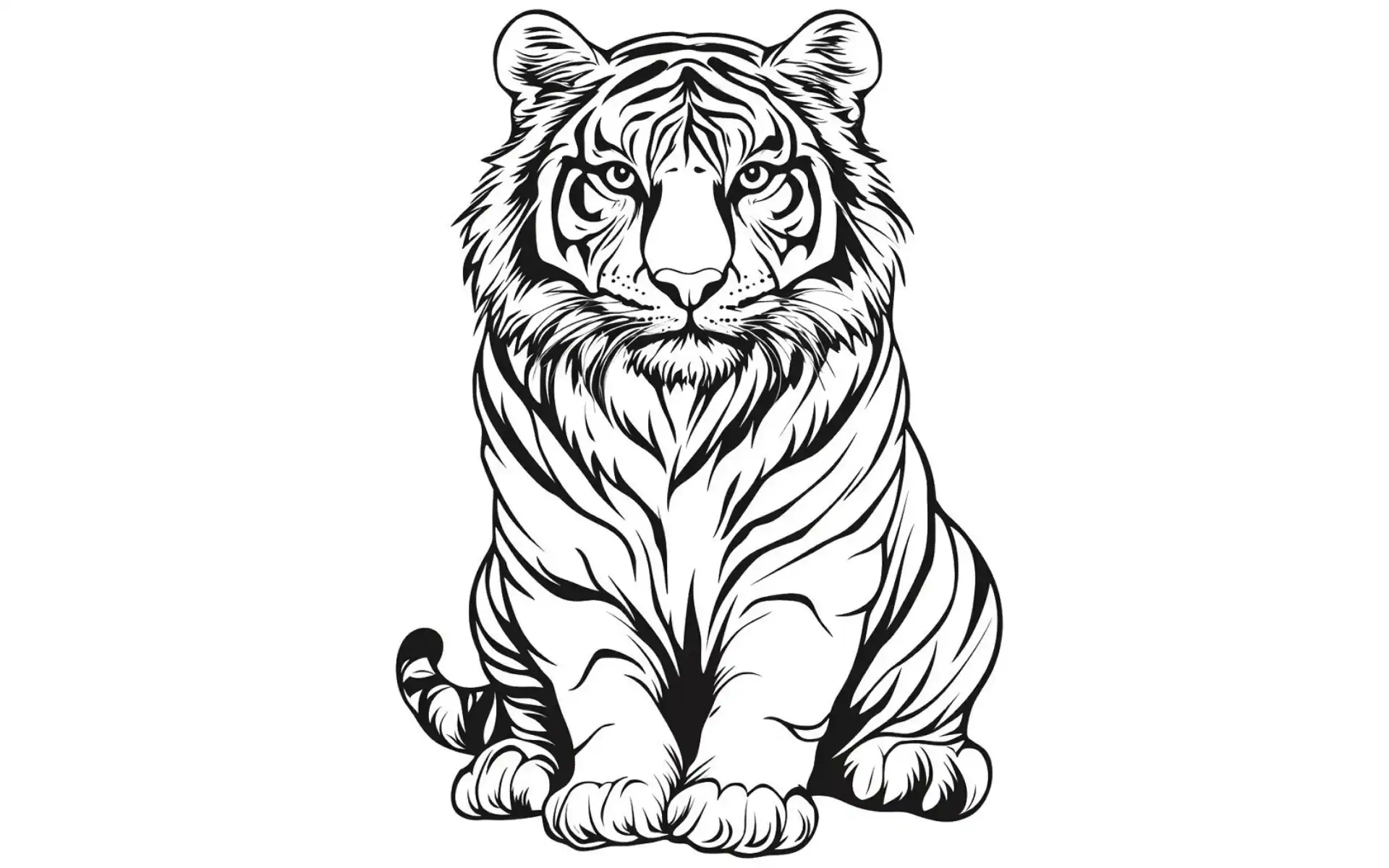
THE COLORING PICTURES ARE AT THE BOTTOM OF THE PAGE, WHEN YOU OPEN THE PICTURE, CLICK ON THE SAVE BUTTON ABOVE THE PICTURE.
The Tiger and Its Unique Stripes
Every tiger has a unique stripe pattern, much like human fingerprints. This means no two tigers are exactly alike! These stripes help camouflage the tiger in its habitat, whether in dense forests or open fields. Imagine how fun it will be to create your own pattern while choosing colors and details for your tiger to paint!
The World's Largest Feline
The tiger is the largest feline in the world, even bigger than the famous lion. Males can reach up to 3.3 meters in length and weigh around 300 kilograms! Their sharp claws and teeth make them a formidable predator. It’s a powerful animal that combines strength with agility. As you color your drawing, remember the size and majesty of this jungle giant.
Interesting Facts About Tigers
Tigers aren’t just beautiful; they also have a bunch of fascinating characteristics. Let’s explore some curiosities that make these animals so special.
Tigers Are Excellent Swimmers
Unlike most felines, tigers love to swim! They’re known to dive into rivers and lakes to cool off or even hunt. Many tigers live in hot and humid areas, so water also serves as relief from the heat.
The Silent Hunt
Tigers are solitary and incredibly silent hunters. They have a light step, allowing them to approach their prey unnoticed. Thanks to their retractable claws, they can move with total discretion. When coloring a tiger drawing, imagine all the strategy involved in each movement of this stealthy predator.
Tigers: Diversity of Species
Tigers may seem very similar at first glance, but there are several tiger subspecies, each with its own characteristics and specific habitats.
The Bengal Tiger
Perhaps the most famous of the tigers, the Bengal tiger is found mainly in India and Nepal. It’s known for its vibrant coat and stripes that stand out in the landscape. The Bengal tiger is one of the largest representatives of its species, and its grandeur makes it a favorite for many people when choosing this beautiful tiger coloring page.
The Siberian Tiger
The Siberian tiger is the largest tiger subspecies and is known for living in the frozen forests of Siberia. Its thicker fur helps it withstand the extremely cold climate. How about printing a drawing of this powerful feline and imagining the frozen landscapes where it dwells while you color?
The Importance of Tigers in Culture
Tigers aren’t just an important part of ecosystems; they also hold great cultural significance in various parts of the world. Let’s take a look at how this feline is viewed by different civilizations.
Symbol of Strength and Courage
In many Asian cultures, the tiger is a symbol of strength, power, and courage. It appears in stories, mythologies, and even in the Chinese horoscope, where it’s the third animal of the zodiac. While coloring a realistic tiger drawing, think about what it represents: an animal of courage and skill, respected and revered for its grandeur.
The Tiger in Art and Fashion
Because of their characteristic stripes and majestic stature, tigers have become an icon in fashion and art. From statues and paintings to prints on clothing, the tiger is a figure that exudes strength and elegance. As you’re coloring a drawing, consider how the tiger is seen as a masterpiece of nature!
Nocturnal Habits of Tigers
Did you know that tigers are nocturnal animals? This means they prefer to hunt and move at night when it’s cooler and their prey is less alert. With eyes adapted to night vision, they have an impressive advantage in the darkness.
Tiger's Night Vision
Tigers have night vision six times more powerful than humans. They can detect even the smallest movements in total darkness, making them exceptional night hunters. You might even color a tiger imagining it in action on a starry night, silently stalking its prey.
The White Marks Behind the Ears
One of the most curious features of tigers is the white marks behind their ears. These marks are called “ocelli” and are believed to help scare off other animals or communicate with other tigers. They can be seen even in the dark, and you can play around with these marks when coloring your drawing!
Tigers: Solitary Animals
Unlike lions, which live in groups called prides, tigers are solitary creatures. They prefer to live and hunt alone, occupying large territories that can range from 20 to 400 square kilometers, depending on prey availability and habitat.
Marked Territories
Tigers use their sense of smell to mark their territories. They scratch trees and spray a mixture of urine and secretions to make it clear that the area is already claimed.
Tiger Communication
Although solitary, tigers communicate with each other using sounds like roars and grunts, as well as leaving visual and scent marks. Their roars can be heard up to three kilometers away! While painting your drawing, imagine what it would be like to hear the echo of a tiger’s roar in the jungle.
Tigers and Conservation
Various organizations around the world are working to save tigers from extinction. From creating wildlife reserves to campaigns against illegal hunting, many efforts are being made to ensure these incredible animals can continue to live and thrive in their natural habitats. As you color a tiger, you can reflect on the importance of conservation and the role each of us plays in protecting these magnificent animals.
The Impact of Tigers on the Ecosystem
Tigers play a vital role in their ecosystems by controlling herbivore populations and ensuring natural balance. If they were to disappear, there would be a cascading effect impacting many other species. While coloring, think about the positive impact these felines have on the environment.
The Tiger and Its Sensitive Whiskers
Tigers, like other felines, have extremely sensitive whiskers that help detect movements around them, especially at night. These whiskers are as important as their hearing and sight. They help the tiger perceive obstacles and subtle movements in the environment, especially during their stealthy hunts.
Tigers in Different Cultures and Religions
The tiger, being an imposing creature, appears in various ways in mythologies and religions around the world. Each culture sees the tiger uniquely, usually with admiration and respect.
The Tiger in Chinese Mythology
In Chinese culture, the tiger is one of the most revered animals. It’s associated with the Earth element and is one of the four mythical animals representing the cardinal directions. The tiger is seen as a protector against evil spirits and brings good luck. It’s not uncommon to find representations of tigers in Chinese art, where they symbolize power and courage.
The Tiger and the Chinese Zodiac
In the Chinese zodiac, the tiger holds a special place as the third animal in the 12-year cycle. People born in the year of the tiger are often seen as brave, competitive, and impulsive, much like the feline itself. Imagine how much energy and strength you can convey while coloring a tiger inspired by these characteristics!
Social Behavior of Tigers
As mentioned earlier, tigers are solitary animals, but that doesn’t mean they don’t interact with other tigers throughout their lives. There are certain times when they gather or need to communicate, such as during mating.
Dedicated Mothers
Tigresses, in particular, are extremely protective of their cubs. After a gestation period of about 3 to 4 months, a tigress usually gives birth to two to four cubs. She cares for them alone, teaching them to hunt and survive until they’re ready to live independently, which usually happens around two years of age. Coloring a mother tiger with her cubs can be an excellent opportunity to create an emotional scene!
Marking and Communication
Another form of interaction among tigers is territory marking. Tigers have a unique way of communicating with other members of their species through tree scratches and scent marks. This silent communication helps avoid unnecessary confrontations and maintains balance among tigers in a given area. As you color, imagine what it would be like to observe this behavior up close in nature.
The Habitat of Tigers
Tigers are adaptable to various types of habitats, from dense forests to swampy regions. However, they’re facing significant loss of their territories due to human expansion, which increases the risks of extinction.
Tropical Forests and Mangroves
Some tigers, like the Bengal tiger, inhabit tropical forests and mangroves. These environments are rich in prey and offer dense vegetation for tigers to hide and hunt. The Sundarbans National Park, for example, is one of the places where you can find tigers hunting in mangrove areas a unique scene you can recreate in your drawings.
Frozen Territories of the Siberian Tiger
On the other hand, the Siberian tiger lives in completely opposite conditions, in the cold regions of Siberia and northeastern China. Its thicker fur helps it withstand freezing temperatures, and it’s known for being incredibly resilient to harsh weather. Coloring a Siberian tiger can be an interesting experience as you imagine the snowy landscapes and vast open spaces where it reigns.
Why Do Tigers Roar?
One of the most striking characteristics of tigers is their powerful roar, which can be heard up to three kilometers away. This sound is a form of communication used to mark territory, call other tigers, or express emotion. Interestingly, not every tiger roar has the same intensity or meaning.
Types of Sounds
Besides roaring, tigers make other sounds like purring, grunting, and even meowing, depending on the situation. For example, a mother tigress might purr to soothe her cubs, while a low grunt could be a warning for an invading tiger to stay away.
The Tigers and Their Predators
Even as apex predators, tigers aren’t entirely free from threats. Although few animals hunt tigers, they still face challenges in the wild.
Humans as the Greatest Threat
The biggest threat to tigers is undoubtedly humans. Poaching and habitat destruction are the main factors putting these felines at risk. Many hunters pursue tigers for their skins and other body parts, which are sold on the black market. When choosing a tiger coloring page, remember the importance of preserving these magnificent animals for future generations.
Natural Predators
While adult tigers are rarely hunted by other animals, cubs can be vulnerable to predators like leopards and crocodiles. This makes the role of the mother tigress even more important during the early years of the cubs’ lives. Drawing and coloring this relationship between mother and cubs can be a creative and exciting exercise!
Albino Tigers: A Rarity
One of the rarest types of tiger is the albino tiger, also known as the white tiger. These tigers are extremely rare in the wild due to a genetic mutation that alters their coat color. While many think they’re a different species, albino tigers are actually Bengal tigers with a genetic variation that gives them white fur and blue eyes. They’re especially popular in zoos and wildlife parks.
The Beauty of the White Tiger
With their dark stripes contrasting against white fur, the albino tiger is one of the most beautiful and impressive animals to see.
The Future of Tigers
Although tiger populations are declining, there’s hope for the future of these great felines. Various conservation initiatives are underway to protect tigers and their habitats.
Tiger Reserves
Many countries, like India and Russia, have established large reserves where tigers can live freely and with protection against poachers. These reserves not only protect tigers but also educate the public about the importance of preserving these animals. By printing and coloring a tiger, you can also reflect on how small actions can help protect wildlife.
The Importance of Education and Awareness
Educating people about the importance of tigers and their habitats is crucial to ensuring they continue to exist in the wild. While you have fun coloring your tiger, remember the positive impact that awareness can have on preserving these magnificent animals.
Now, with all this information and curiosities in mind, choose your favorite Tiger Coloring Page, print it, and let your creativity flow!

